It’s been a long time but, now that things have finally opened up again, I’m happy to say I’ve just had my first little holiday in over 2 years. While I’ll always be obsessed with exploring London itself, I’m also keen to poke around places further afield a bit more, as it’s so easy to hop on fast trains out of the city, to practically any part of the UK, unlike where I used to live. I’ve settled into London very well over the past 5 years, even if I have been largely stuck indoors for the last 2 of them, so I’m looking forward to broadening my horizons.
So at the end of March I spent a week in Milton Keynes. Hardly an exotic location, I know, but still an enjoyable and worthwhile change of scenery. And it was all off my own back, meaning nothing here is sponsored or gifted.
As well as seeing an audio described theatre show, which I’ll mention in my next post, I also spent a few days checking out the most famous museums in the area, marking the first time I’ve been to such places since the pandemic began. So that’s what I’m going to tell you about here, focusing primarily on the most significant location – Bletchley Park – as what was achieved there was nothing short of extraordinary, but there are a few other things to mention as well. And I’ve also uploaded some video clips I recorded at Bletchley Park, which will give you a small sense of the atmosphere, so do check that out too.
Contents
Bletchley Park
Overview
The importance of Bletchley Park cannot be overstated. Without the incredible expertise, creative engineering and endless determination of the codebreakers and all their support staff, the outcome of World War II could have been very different indeed. Germany’s Enigma machines had approximately 159 million million million possible settings for encoding their messages, and they used different settings on a daily basis, plus they complicated things further when their Navy produced a 4-rotor model. So the Nazis believed that breaking the Enigma code was an insurmountable task.
The fact that Bletchley (building on early work by Polish intelligence) were then able to crack it, therefore, is widely estimated to have shortened the war by at least 2 years, saving millions of lives. There are several examples of Enigma machines in the main Bletchley museum, plus a working example in the neighbouring Computing Museum (the latter I’ve briefly mentioned later in this post, but that’s where the images of the machine below are from).
Yet for decades the Bletchley workers never got the recognition and credit they deserved, because it had to be kept quiet. Everyone had to sign the Official Secrets Act, and never told their families and friends. Even when socialising with their colleagues from other parts of the campus, which inevitably led to some romantic relationships, they couldn’t tell each other what they were doing. So in the end, many workers took their secrets to their graves. Details did start to become public in the 1970s, but even then there was still a long wait before the staff were finally honoured in 2009. And then in 2014 it was opened to the public as an important heritage site, so we can properly appreciate, marvel at and be grateful for the efforts that were made to help secure the freedoms we have today.
The size of the estate and all of the period detailing within it reflects the sheer scale and complexity of the operation, and I ended up spending 5 hours looking around, as I was so absorbed in it all. There is a lot to read if you feel so inclined, and thousands of items to look at, but everything’s set out as it would have been at the time, in a way that really brings it to life. There are objects and screens you can touch and interact with, short films to watch, and speakers that play conversations, radio broadcasts and sound effects, plus an interactive multimedia guide that you can carry around to get lots of information, a lake by which you can relax and enjoy the scenery when the weather’s nice, and places to eat of course. So you do feel like you’re walking through history, it doesn’t get boring, and there’s something for everyone there.
Audio Description
Although you can join an in-person guided tour of the site, or use their multimedia guide as you wander around, I didn’t do either of those things, because I was able to use an audio description handset instead. It was only by chance that I discovered it was available, mind you, as I stumbled across the only apparent mention of it on their website while looking through the interactive map, which a lot of VI people wouldn’t be able to use. So I have mentioned in my feedback that the AD guide should be more prominently stated on the website. It also took a few attempts for the guy at the desk to find one that worked properly, as one didn’t work at all, and another had the audio cutting out after a few seconds on every track.
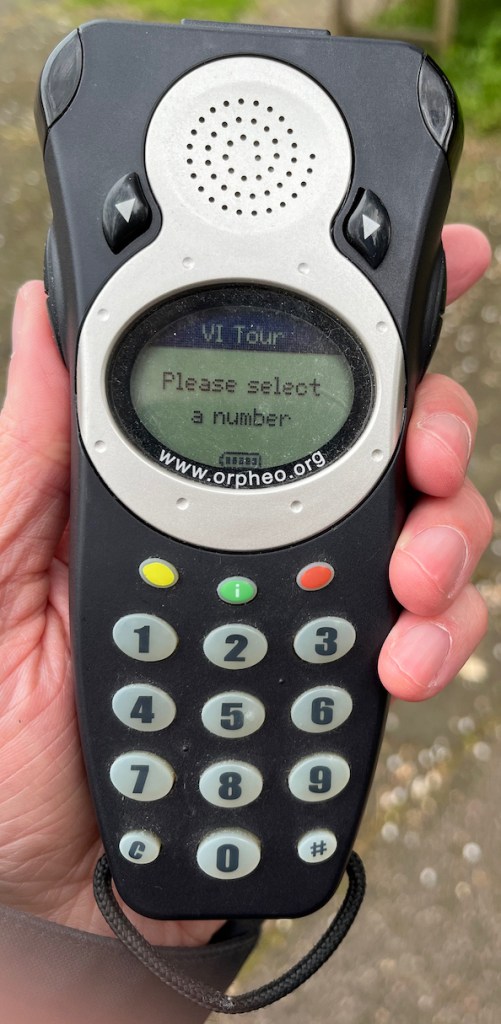
But once I got a working handset, it proved to be invaluable. It described several key items and areas throughout the estate, providing historical context and interesting facts as well as visual descriptions. It doesn’t include things like re-enactments and veterans interviews that are in the standard multimedia guide, but there’s plenty of that kind of material around the estate anyway, so I still got to experience that aspect of things too.
The directions from one stop to the next were also very clear and precise, so I didn’t get lost, and you follow a route that takes you through the entire museum in a sensible order. Plus you advance through everything at your own pace using the forward and back buttons. All of which meant I was able to pause and look at various other rooms and exhibits along the way, sometimes using the Seeing AI app on my phone to have signs converted to speech, or taking photos of signs to read at home later.
So I thought the audio description was excellent. It really helped to make things easier, held my interest throughout, and greatly enhanced my experience. Thank you to audio describer Roz Chalmers, blind consultant Yusuf Osman, editor Andrew Holland, and the supportive Bletchley staff, who all helped to put it together. There’s also a BSL guide as well. You can find more details and reviews about the accessibility of the museum from AccessAble, Access Card, Euan’s Guide & Motability. The AccessAble website also has information about the other museums mentioned later in this post.
Highlights
All in all there was a huge amount to explore, and some of the many things I enjoyed included:
- Hearing about some of the basic logic that helped to narrow down the options when cracking Enigma. For example, letters in Enigma codes never self-ciphered (so A could never become A, B never stood for B, and so on), allowing some solutions to be eliminated immediately. Recognising that there were common patterns and phrases in the messages was also very useful, including references to weather forecasts and the sign-off “Heil Hitler”.
- Learning how complacency and errors by some of the German Enigma operators also helped us out. For example, one operator’s first attempt at a transmission didn’t reach its recipient clearly, so he sent it again – but without changing the cipher settings, and abbreviating some words to make it quicker. That gave the interceptors 2 subtly different copies of the same message using the same encryption, which was a big help in deciphering it.
- Discovering that people transmitting Morse Code can be recognised by their signature style (known as their ‘fist’), much like handwriting. While to the untrained ear all Morse Code can sound the same, experienced interceptors are able to recognise certain operators by their typing speed, the lengths of the dashes and spaces between words, common salutations and sign-outs, and other idiosyncrasies. Plus, knowing where transmissions were originating allowed those operators to be tracked as their messages were identified, so the interceptors could figure out if they were on the move (e.g. where a ship was sailing to), or if the operator had disappeared or been replaced. So it was often possible to gain at least a bit of intel without understanding any of the code, and even a little knowledge can be extremely useful.
- Finding out more about the genius Alan Turing, who played a vital role in the codebreaking operation. There’s an impressive statue of him by Stephen Kettle in the museum, made out of lots of pieces of slate, along with some of his possessions, including a cute teddy bear, a watch, school prize books, and items from King’s College Boat Club. And you can see his office in Hut 8 as well. Indeed, there are a few huts full of offices, replicated in great detail as they would have been at the time for processing intelligence. Some of the rooms even have projected videos on the walls of people working, or audio playing of people talking, examples of which are in my video at the start of this post. So it’s all quite atmospheric.
- Exploring the impressive mansion, including the office of Commander Alastair Denniston, the library, and an exhibition about the early days of the codebreaking operations. The latter includes a list of 114 emergency staff who could be called in to help if war started, including veteran codebreakers, mathematicians, linguists, etc. Alan Turing and Gordon Welchman were among less than 50 people who were approached and accepted the invitation, while author JRR Tolkien was among the ones who weren’t selected at all in the end.
- Looking at the vehicles in the garages behind the mansion, where you can learn about dispatch riders and the distribution of crucial intelligence information.
- Seeing the memorial to 3 Polish mathematicians, who had broken into Enigma in the 1930s, but didn’t have the resources to deal with the daily changes of cipher settings by the Germans, so they generously shared their previously secret work with Bletchley, giving them a vital head start. Yet with all the talk about people like Turing and the work Bletchley did overall, the Polish contribution is often unfairly overlooked or forgotten about, so it’s good to see it being acknowledged.
- Watching a working model of, and learning a lot about, the impressive Bombe machine, which automated the search for the Enigma settings used by the Germans each day. Based on the Bomba machine that had been developed by the Polish for their own Enigma work, Alan Turing altered the design for the British version, so it worked to match a ‘crib’ (some of the predictable text that they believed to be in the message). The machine would stop whenever it found a possible match, which would then be checked. The Computer Museum on the estate also contains a room dedicated to the machine, with an operational model of its own, where the complex wiring at the back is revealed.
The list goes on, I’m obviously not going to mention everything. Indeed, I didn’t even see everything, there was so much there. I didn’t have time to check out the D-Day exhibition, for example, and there’s a new exhibition opening soon on April 28th called The Intelligence Factory, focusing on Bletchley’s operations during the second half of the war. I didn’t get to try out the food in their Hut 4 Café either, as that appeared to be cordoned off, but then the big Premier Inn breakfast I’d had kept me going very nicely anyway!
So, while I’ve seen the bulk of the museum, there is still a bit more I could check out in the future. And my ticket is valid for a year, so I can return during that time at no extra charge. It wouldn’t be worth making the journey back to Milton Keynes just to see a couple of small exhibitions of course, but if I had other reasons to revisit the town one day, it’s worth bearing in mind. In any case though, I’ll end up going back there at some point in the future I’m sure.
Other Museums
There were a few other relatively smaller museums I visited during my holiday as well, a couple of them also on the Bletchley Park estate.
National Radio Centre
Operated by the Radio Society of Great Britain, this building is tucked away behind the main Visitor Centre at Bletchley Park, and is included within the site admission price (or Radio Society members can get in free). So I tagged it on to the end of my main visit to the park, and spent around half an hour in there. It demonstrates the importance of radio communications, especially during wartime but also beyond to the present day, and celebrates the work of volunteer amateur radio enthusiasts (often called radio hams), whose skills at scanning the airwaves and recording transmissions made them a vital resource for the Bletchley interceptors.
There are a some pieces of equipment you can interact with, and you can also try talking to stations around the world using their own GB3RS radio station, although with limited time I didn’t get the opportunity to have a go at that. But I enjoyed chatting to one of the guys at the front desk who told me all about the place when I arrived, as well as listening to another guy in another section who was talking about transmissions in more detail to a visiting family. So it was well worth a look, and is a real treasure trove if you’re heavily into radio stuff.
The National Museum Of Computing
I returned to Bletchley Park to explore this museum on a different day to the rest of the site, as I knew I needed to allow plenty of time for it. You find the museum by going past the visitor centre entrance, round the corner, and following the long road up to the end. There’s a nice visual story PDF on their Accessibility page that illustrates how to find and enter the museum, and a sensory map’s available there too. You have to book and pay for the museum separately to the main Bletchley site as well, which is fair enough, as they do have a huge amount of equipment on display.
And it makes sense for it to be there, as Bletchley played a major role in the evolution of modern computing, particularly thanks to Colossus, the world’s first programmable, electronic, digital computer, designed by Tommy Flowers to help break the even more complex Lorenz cipher used by German High Command. A reconstructed Colossus machine is on display in the Computing Museum, as are Enigma and Bombe machines. And the other exhibitions take you through the development of commercial and personal computers through the ages, right up to the present day. There are naturally some machines you can have a go on, to try out a bit of programming or play games, and a ton of objects to look at.
There is a lot of signage to read as well, and a lot of it wasn’t easy to see – it would be useful to have large print or audio described guides, or an audio described tour, to describe key items in each section. But I was able to use my phone and monocular to help me of course, so there were some things I took the time to read. And I was able to chat extensively to the guides in a couple of the early exhibition rooms, including the Bombe display, who were really informative and insightful. It would have been good if there were other guides to chat to in some of the other rooms too – although, as there was also a school group in that day, I appreciate some of the staff were rather busy!
So I did enjoy my visit, spending about 3 hours looking around. It was very cool to see how much stuff they have, and interesting to learn even more about the wartime operations at Bletchley. It was also a fun nostalgia trip to see some computers, software, gaming consoles and pocket devices that I remember from my younger days. So again there’s something for everyone to enjoy and learn there, even if you know a lot about computers already.
Milton Keynes Museum
This museum is based on an old Victorian farm in Wolverton, on the opposite side of town from Bletchley Park, and contains a cornucopia of interesting historical items from the 1800s onwards. A lot of the old objects can be touched and interacted with as well – carefully of course – and there are lovely volunteers throughout the site to assist, explain and demonstrate things. I chatted to most of them as I made my way through the different rooms of the main farm building, and thoroughly enjoyed doing so. They were all very friendly and knowledgeable, and they brought the whole experience to life.
I actually wandered through the main building from back to front, which some visitors like to do, because I had been forewarned that there was a school group there. So traversing the rooms in the opposite direction ensured that I wouldn’t get stuck behind them or be forced to rush onwards if I were ahead of them, and would only cross their path once. Which proved to be a very wise move.
That said, it did mean that I completely missed the Print Shop and Hall Of Transport, which are in separate buildings hidden away behind the café and picnic area, with no obvious signage to my dodgy eyes that there was anything to see in that direction. They are marked on the map, but I’d somehow got a bit confused trying to read it and just wandered around to the back of the main building instead, as was my original intention. So by the time I left via the front door, I’d forgotten about those extra bits. It’s a shame, especially as I work in the print industry, but again it leaves things open for a return visit one day (and just like Bletchley Park, the ticket is valid for a year).
Nevertheless, I was completely engrossed in everything else I looked at anyway, often accompanied by the lovely volunteers, as well as a few rooms I explored on my own. So I was there for a good few hours, and I certainly made the most of it, looking around various areas including a children’s play room (chock full of toys from olden times to the present day), school room, servants’ room, kitchen, laundry, a recreated high street of old style shops (some of which you can enter), and a barn house full of old farming equipment. The amount of items and attention to detail is amazing throughout.
The telecommunications room was particularly interesting, where I got to use the pneumatic tube system (sticking a message in one end so it’s sucked through the pipes at high speed), had a go at connecting standard and emergency calls on telephone exchanges, looked at a selection of old phone boxes (which are connected to each other so you can call between them), saw a couple of police call boxes (one very Tardis-like with an open panel in the front and a light on top), and heard the amusing ringtones of a few novelty phones designed like cartoon characters. And the beautifully furnished parlour and music rooms were also a key highlight, where I got to see an oil lamp being lit, operate a pianola (pressing pedals so the piano plays itself from music on a card with punched holes), listen to old music boxes, and hear one of the earliest pieces of equipment that played recorded sound.
So it’s another lovely museum that’s well worth a visit if you’re in the area, because there are so many different things to look at, it’s so interactive, and the people working there are so friendly and interesting to talk to.
Film & TV
Since returning home I’ve also watched a few movies and TV programmes on Amazon, Netflix and Youtube to complement my Bletchley experience. It’s been great to watch them while my visit is fresh in my mind, so I can expand my knowledge of the people, places, objects and operations that I discovered while I was there.
Codebreaker: The Alan Turing Story
This is a very well made docudrama from 2011, narrated by Paul McGann, that takes us through Alan Turing’s life, and I was able to rent it on Amazon for just 99p. There are interviews with people who knew and worked with him (including his nephew Sir Dermot Turing), and others who understand the significance of his work (such as mathematician Matt Parker, who I’ve seen live as part of An Evening Of Unnecessary Detail). It’s all mixed in with re-enactments of Turing (played by Ed Stoppard) meeting with psychiatrist Dr. Franz Greenbaum (Henry Goodman), giving Turing his own voice in the programme.
It really is an important and fascinating story, and also a tragic one. The word ‘genius’ can be thrown around too freely sometimes, but in his case it’s absolutely justified. His theories, concepts and designs of computers and artificial intelligence changed the world forever, and form the direct foundations of so many things we use and rely upon in our daily lives, including the device you’re reading this on now. Plus he helped to save millions of lives with his codebreaking work at Bletchley, and later he wrote a highly influential paper about how patterns like stripes and spirals are formed in nature.
But he was also homosexual, which was illegal in the UK until 1967, and he was convicted for gross indecency after admitting to a sexual relationship with another man. And as he didn’t want to go to prison, he was forced to endure the only alternative of chemical castration, which was believed to cure people of, or at least substantially reduce, their supposedly immoral sexual leanings. This inhumane treatment caused him to suffer profound distress and public disgrace, and he committed suicide at the age of just 41, having never been properly hailed for the hero and mastermind that he was. He was eventually given a posthumous pardon in 2013, and a few years later it was announced that thousands of other gay men would also be pardoned. Better late than never, but it’s sad that we’ll never know how much more Turing would have achieved if things had been different.
The Imitation Game
This 2014 movie, based on the book Alan Turing: The Enigma by Andrew Hodges, features an excellent performance by Benedict Cumberbatch as Alan Turing, alongside some other big names including Keira Knightley, Rory Kinnear & Charles Dance. The film, which I saw on Netflix, mainly focuses on the war years at Bletchley, where Turing frustrates people with his way of working and poor social skills, and struggles to convince those around him that his Bombe machine will work, while also trying to deal with the fact that he’s homosexual. But there are regular jumps to his childhood to fill in his backstory, as well as forward flashes to the police investigation that leads to his prosecution for being gay.
While there are historical inaccuracies to fit the storytelling, it doesn’t detract from the film for me, which is very well put together, and on the whole it makes a nice companion piece to the docudrama mentioned above. It was also nominated for many awards, including 8 Oscars (for which it won one for Best Adapted Screenplay), 5 Golden Globes and 9 BAFTAs, among others.
Code-breaking’s Forgotten Genius
This is a very interesting and important BBC documentary, that I was able to find on Youtube, about another critical contributor to the work at Bletchley – Gordon Welchman – who is often forgotten about while Alan Turing gets all the attention.
Welchman became an expert in traffic analysis, looking at the intricate details of how the Germans’ messages were sent and received, something we now think of as metadata or network analysis. But even more importantly, he played an essential role in breaking the Enigma ciphers, going so far as to become the head of Hut 6, the department that broke the ciphers used by the German Army and Air Force. And after Turing creatively adapted the Bombe machine from the Polish design for British use, it was Welchman who then invented the Diagonal Board that made the machine even more powerful at cracking the Enigma messages. So he made several pivotal contributions to the codebreaking effort, before going to America after the war to work on their military communications.
But his life was also brought to ruins, albeit in a different way to Turing’s. After keeping his career secret for many years, Welchman eventually felt in a position to write a book about it – The Hut Six Story – as some details had started to emerge in other published works. But as he was someone on the inside, unlike the other authors, the NSA in America didn’t take kindly to it, retracting his security clearances and doing whatever they could to shut him down, and the UK’s GCHQ weren’t supportive either. So it’s another compelling and ultimately sad story, of someone who did so much to ensure our victory in the war, yet who didn’t get the recognition and respect they deserved until long after they’d died.
Enigma
This 2001 film starring Kate Winslet, Saffron Burrows & Dougray Scott is based on the book Enigma by Robert Harris, and was produced by Mick Jagger, who makes a cameo appearance as an RAF officer at a dance. It’s also notable for being the last film scored by renowned composer John Barry. The story is about Tom Jericho, who has returned to Bletchley after suffering a breakdown, to help crack a new cipher being used for German U-Boats. But he also learns that a coworker he fell in love with has disappeared after stealing some coded intercepts, so he works with her housemate to find out what happened.
I watched it on Amazon, and it’s reasonably entertaining, but it’s not as good as The Imitation Game. Apart from providing a nice bit of explanation about how Enigma works and the general purpose of the Bletchley operations, beyond that it’s mainly fictional, even omitting people like Alan Turing entirely, and using a completely different location to represent Bletchley (Chicheley Hall). If I’d watched the film without having visited and learnt about Bletchley, then I guess I might have enjoyed it more. But with everything so fresh in my mind it just didn’t feel right in many ways, as you can’t help but make comparisons.
Still, after filming was completed, Mick Jagger and the production team did donate a 1947 Sunbeam Talbot car and a 1938 Austin 18 Ambulance used in the movie to Bletchley, and they’re on display in the garages, as shown in my photos above.
The Bletchley Circle
This is a lovely little mystery drama shown on ITV in the UK and PBS in America from 2012-2014, consisting of just 7 episodes across 2 seasons. I watched it on Amazon by signing up for a free trial of Acorn TV (which I then cancelled as there was nothing else that particularly tempted me).
It focuses on 4 very clever ladies who used to work together as codebreakers at Bletchley Park. They return to their ordinary lives following the end of the war, but end up regrouping in 1952 to solve crimes that the police aren’t getting anywhere with, using their special skillsets. They’re led by Susan Gray, played by Anna Maxwell Martin – who, by coincidence, I’d seen back in March when I binged Line Of Duty for the first time, where she plays the arrogant Patricia Carmichael. Her Bletchley character is completely different, but she’s great in both shows. And her fellow codebreakers are a nice mixture, each bringing different skills to the group, and they have a good chemistry together.
By the nature of crime dramas, there are dark, disturbing and dangerous moments that the women have to deal with, partly in relation to their home lives, where men like to rule the roost, as well as the crimes they’re investigating, which sometimes have a more profound impact than they were expecting. But they help and support each other no matter what. And there’s also lots of nice period detailing, it’s beautifully filmed.
So it’s interesting and fun to watch, with some nice twists and turns along the way. Yet it only had a short life, so it’s not one of ITV’s better-known dramas. In 2018, however, two of the main characters did go on to solve further murders in a San Francisco spin-off, which is available on Netflix with audio description, though it’s not as good as the original series. A second series of that spin-off was being discussed in 2019, but everything’s gone quiet since the pandemic got in the way, so it’s currently unclear whether that will still happen.
Other Online Content
There are various other things you can watch and listen to online of course. I haven’t gone through it all, and I don’t have the time or intention to do so, but it’s worth mentioning a couple of things to finish with.
First there is the Bletchley Park Podcast, produced by Mark Cotton, who mentioned it to me on Twitter. It has over 160 hours of audio, giving a huge amount of additional insight into the site’s fascinating history, extensive operations, vast significance and continued relevance, and features lots of interviews with veterans, staff and volunteers. So it’s well worth a listen if you want to delve even deeper into Bletchley Park’s work.
And secondly there are Youtube channels for all of the museums I visited:
- Bletchley Park – There are some nice videos on here, including stories and rare footage from veterans, a comprehensive series about the UK’s collaborative relationship with the USA, and some behind the scenes looks at specific objects, the latter including a detailed look at an Enigma machine.
- The National Museum of Computing – There’s loads of material here, including a series of virtual talks. Among them is The real story of how Enigma was broken, an important video by Sir Dermot Turing (Alan Turing’s nephew) that discusses the work of the Poles and how Bletchley came to be involved with deciphering Enigma messages. Elsewhere on Youtube, Sir Dermot can also be seen delivering a lecture about Enigma for Oxford University, and talking about his uncle at the International Spy Museum.
- Radio Society of Great Britain – This is a goldmine of talks and information for keen amateur radio enthusiasts. It’s not a hobby I have any experience with or deep interest in myself, but it will certainly be of great appeal to many. The best place to start is the playlist About the RSGB.
- Milton Keynes Museum – There isn’t much content here, and no lengthy talks or documentaries, but there are still nice little glimpses at some of the areas and exhibits of the museum, and events they’ve held.
Conclusion
Bletchley Park is such an iconic and important location, so I’m really glad I took the opportunity to visit, and was able see so much of what it has to offer. It’s very humbling and gratifying to get so much insight into the work they carried out, and to learn about the life of people like Alan Turing and Gordon Welchman. So I can absolutely recommend it, along with the Radio Centre and Computing Museum on the estate. Likewise the Milton Keynes Museum is very worthy of a visit, as they also bring the history alive really well and have such a delightful variety of exhibits.
So I hope you enjoyed reading about all of that. And join me again soon for my next post, where I’ll tell you about my first attendance of a musical that’s been on my bucket list for a long time!


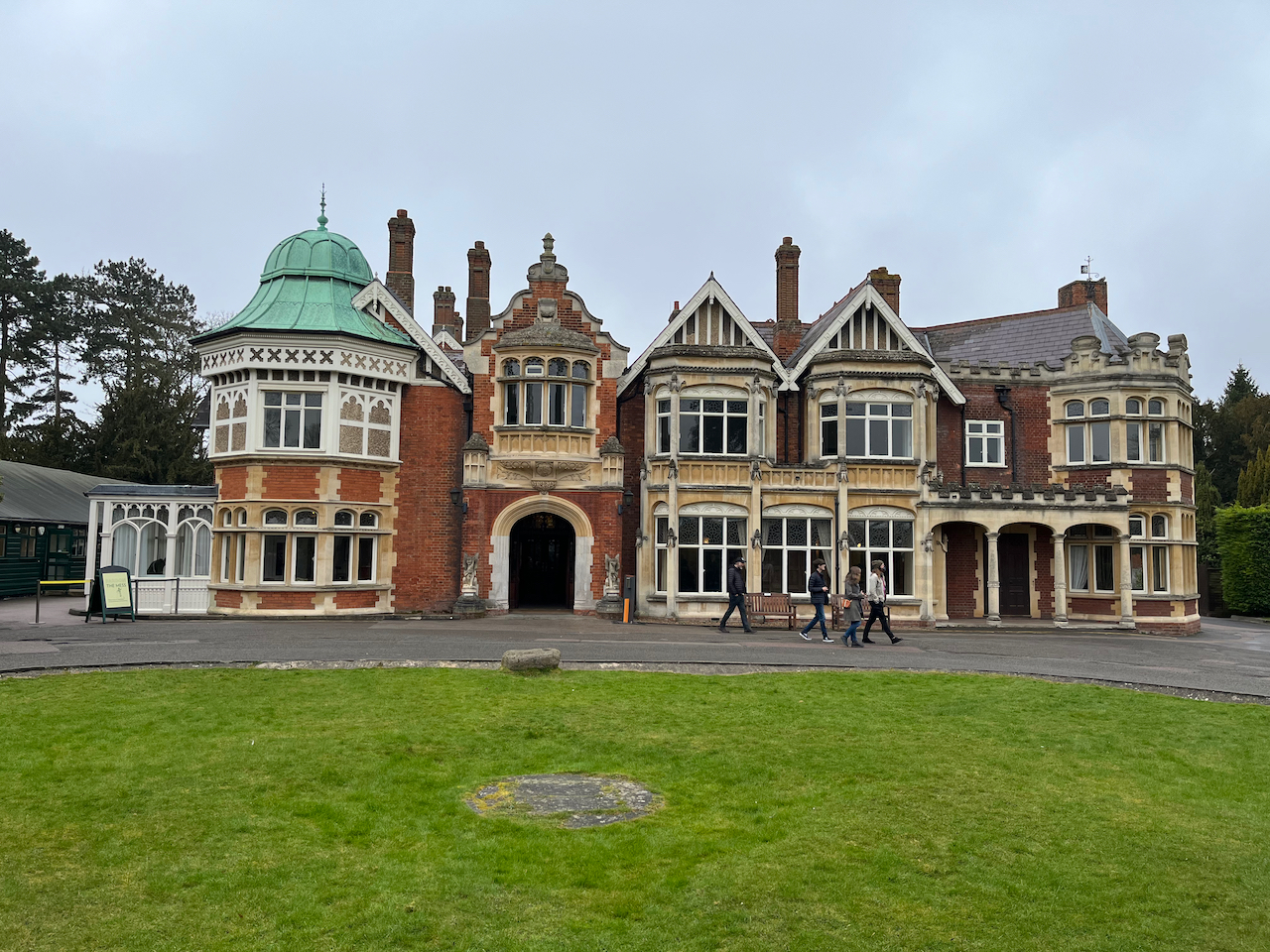
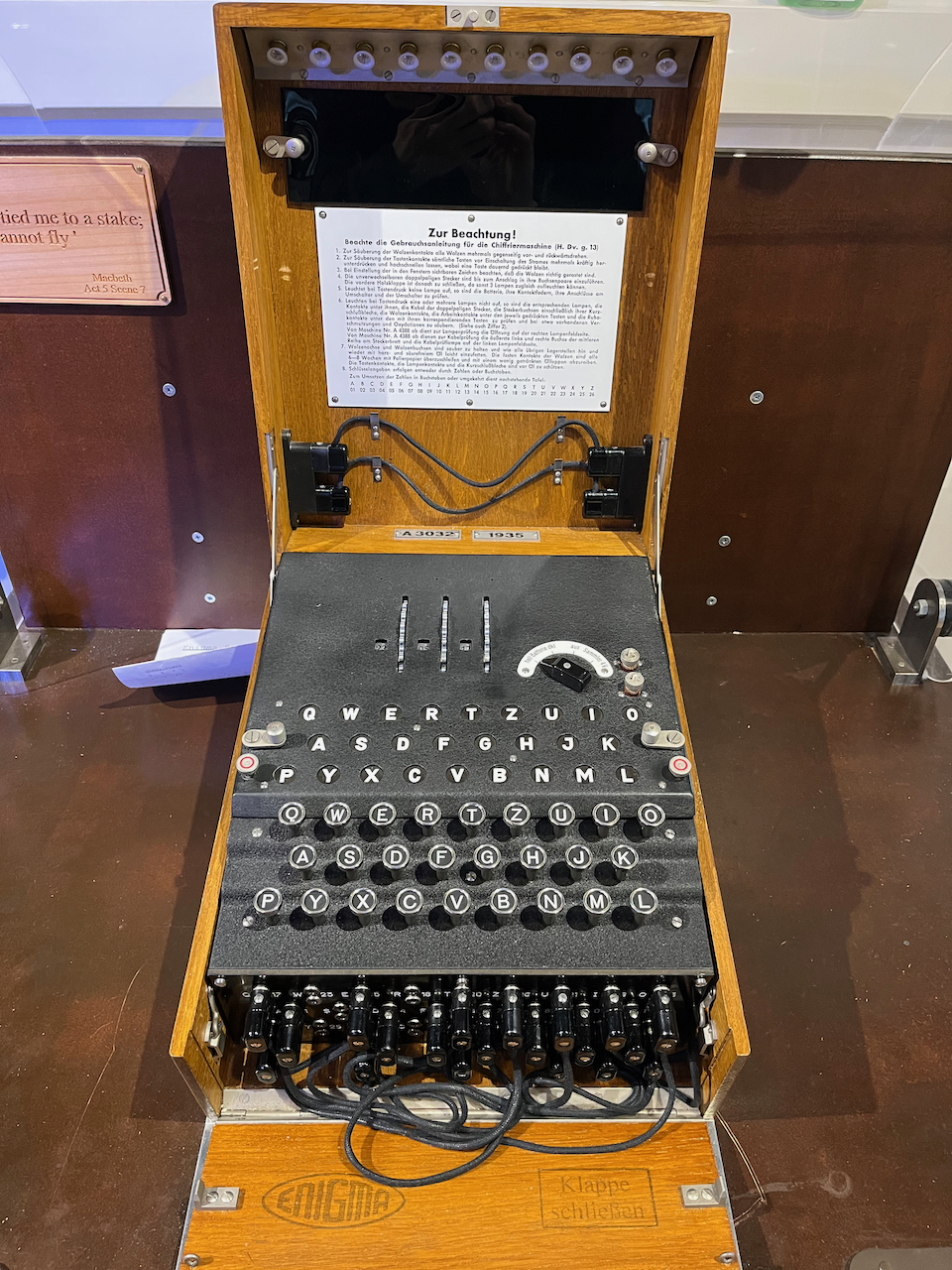
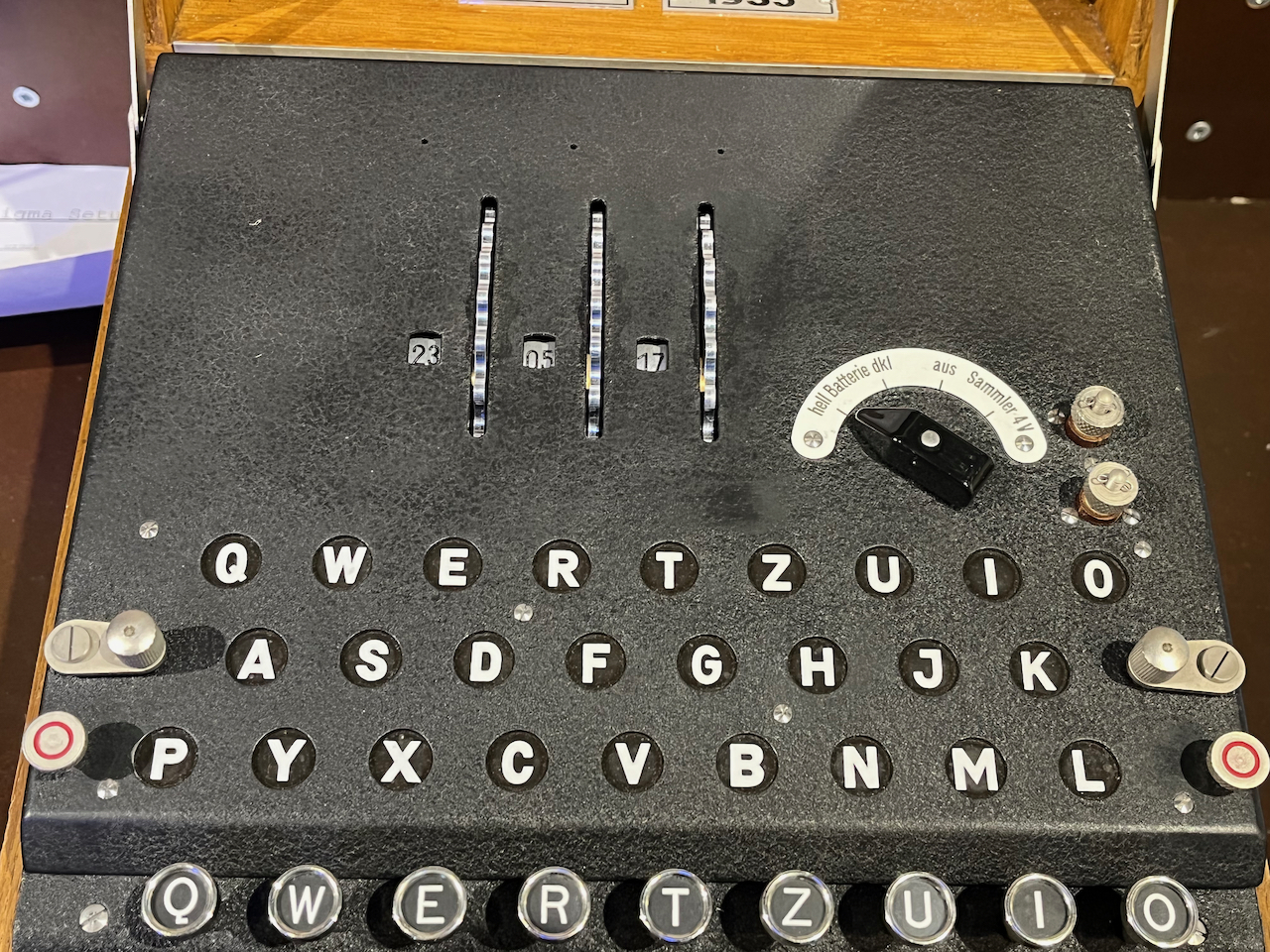
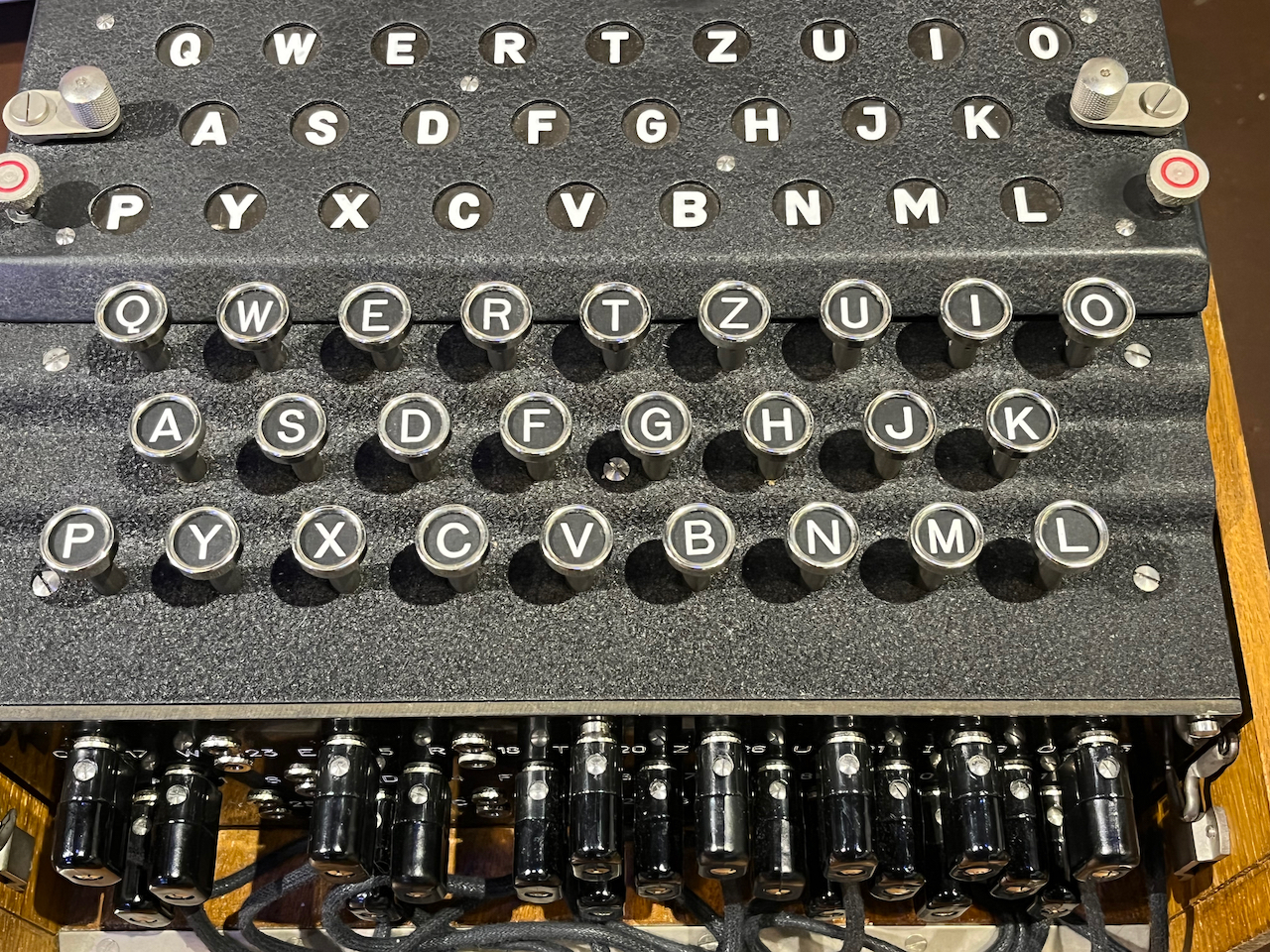

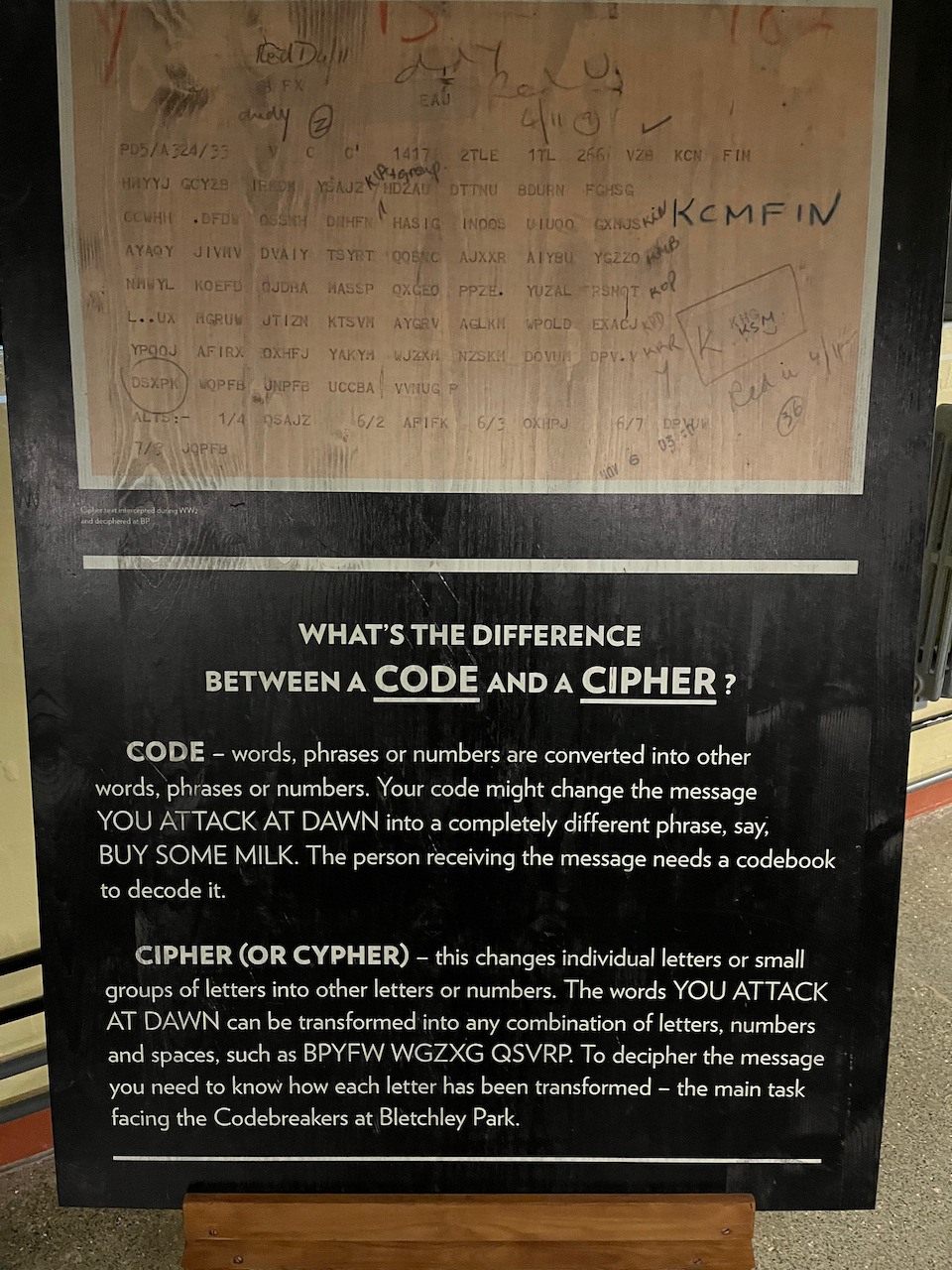
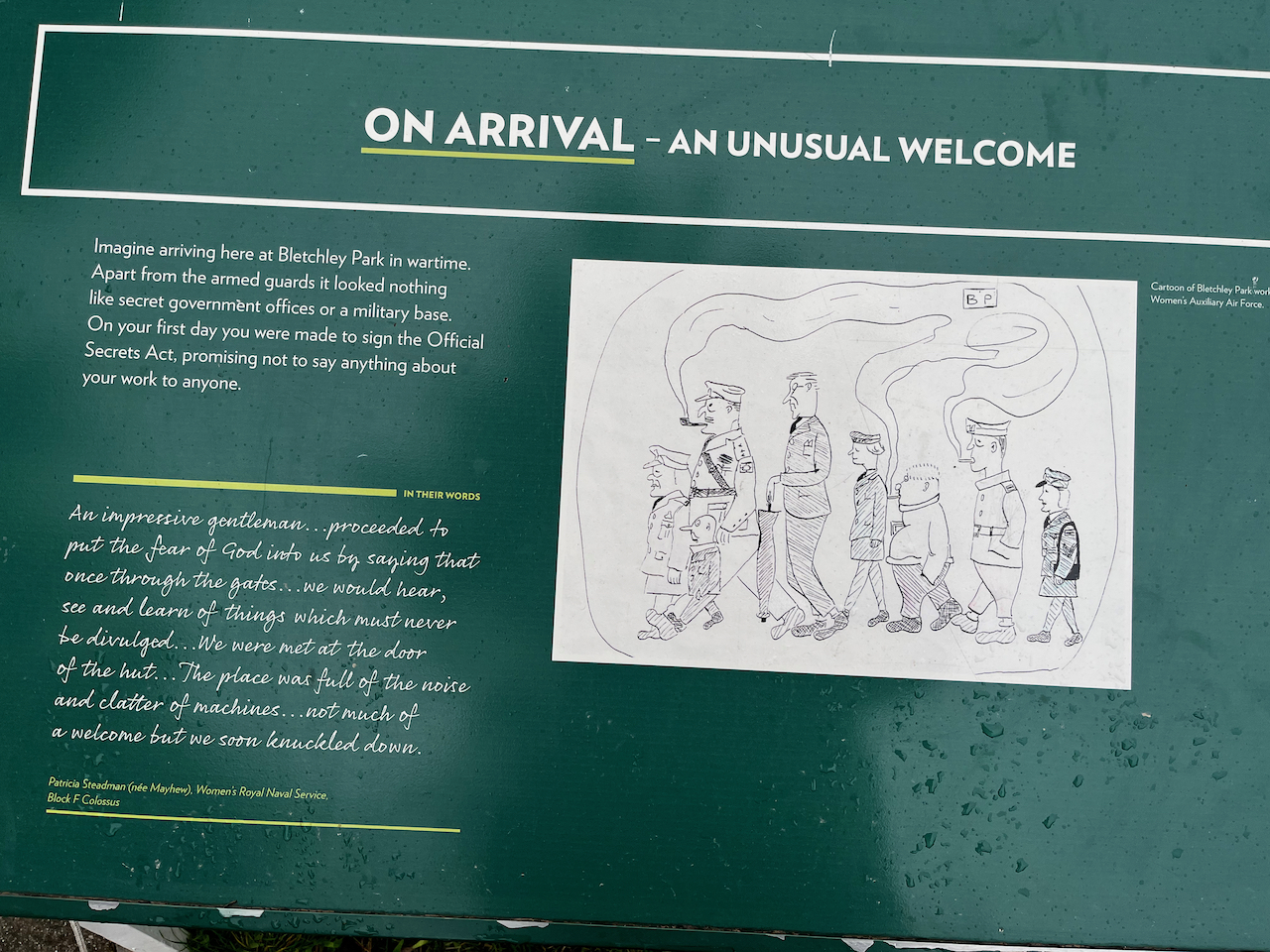
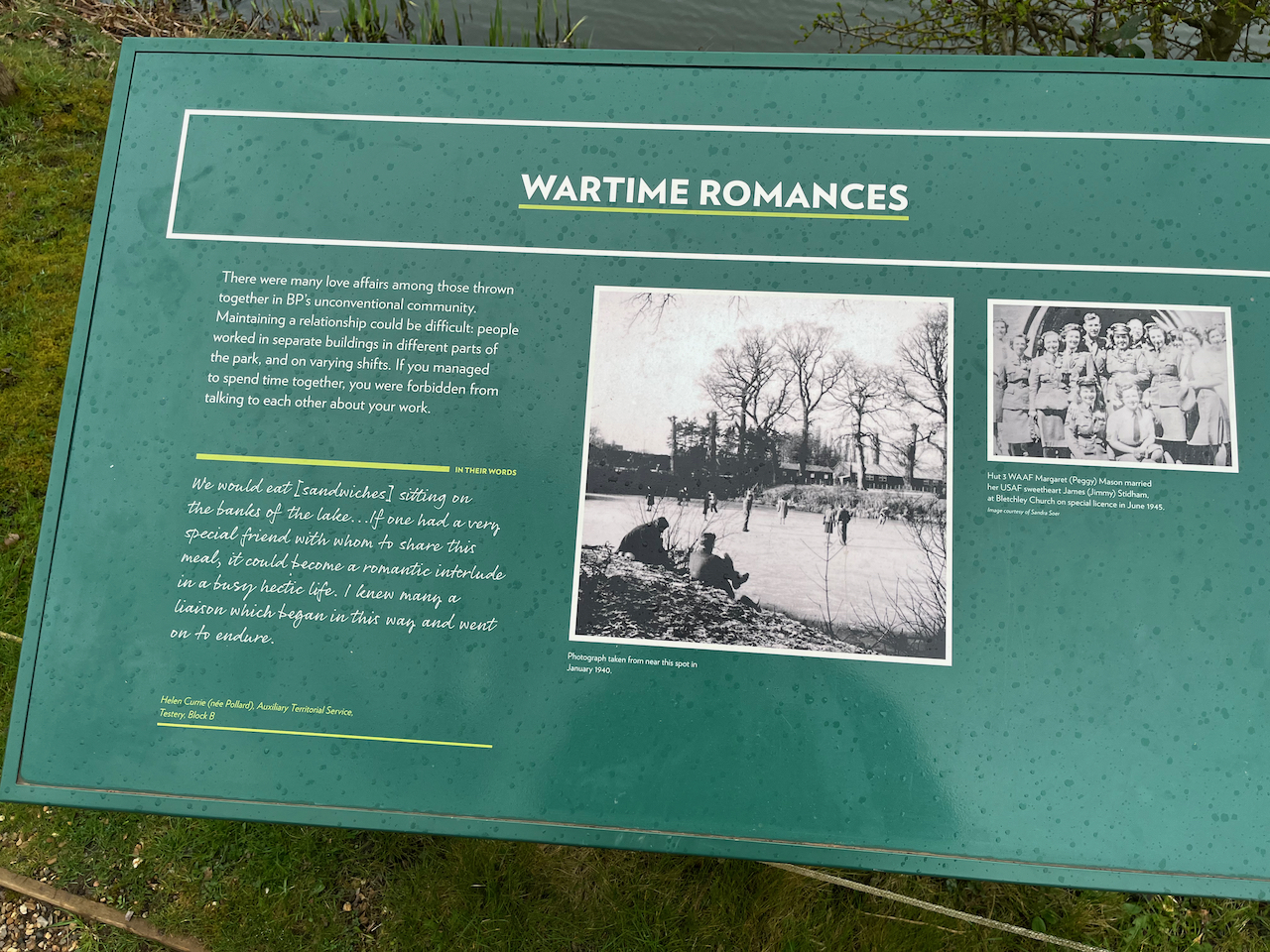
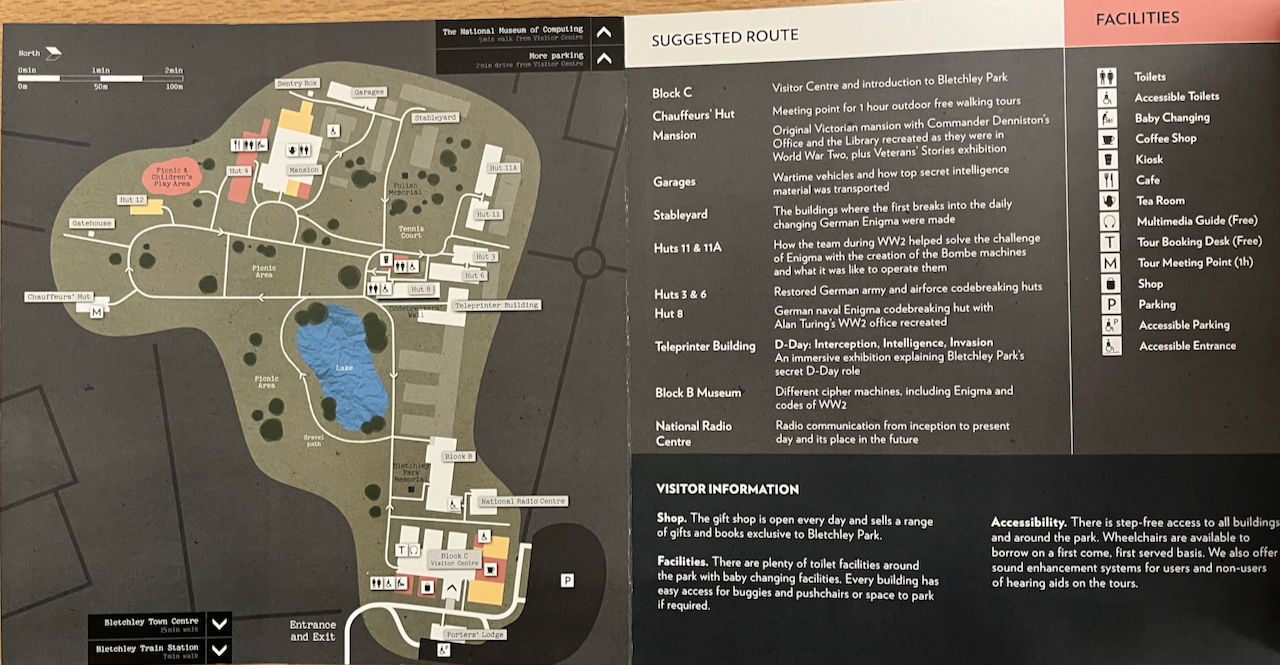
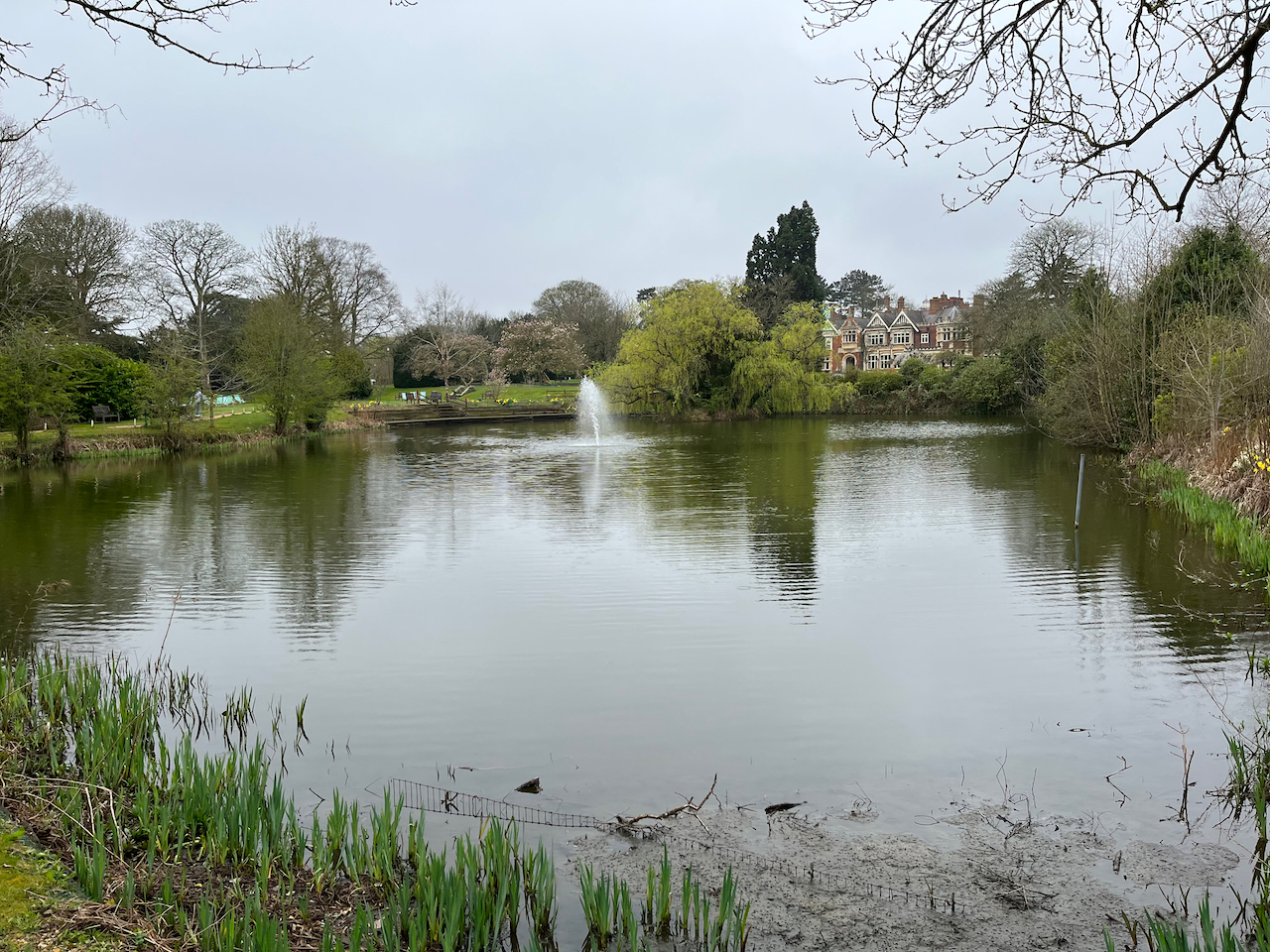
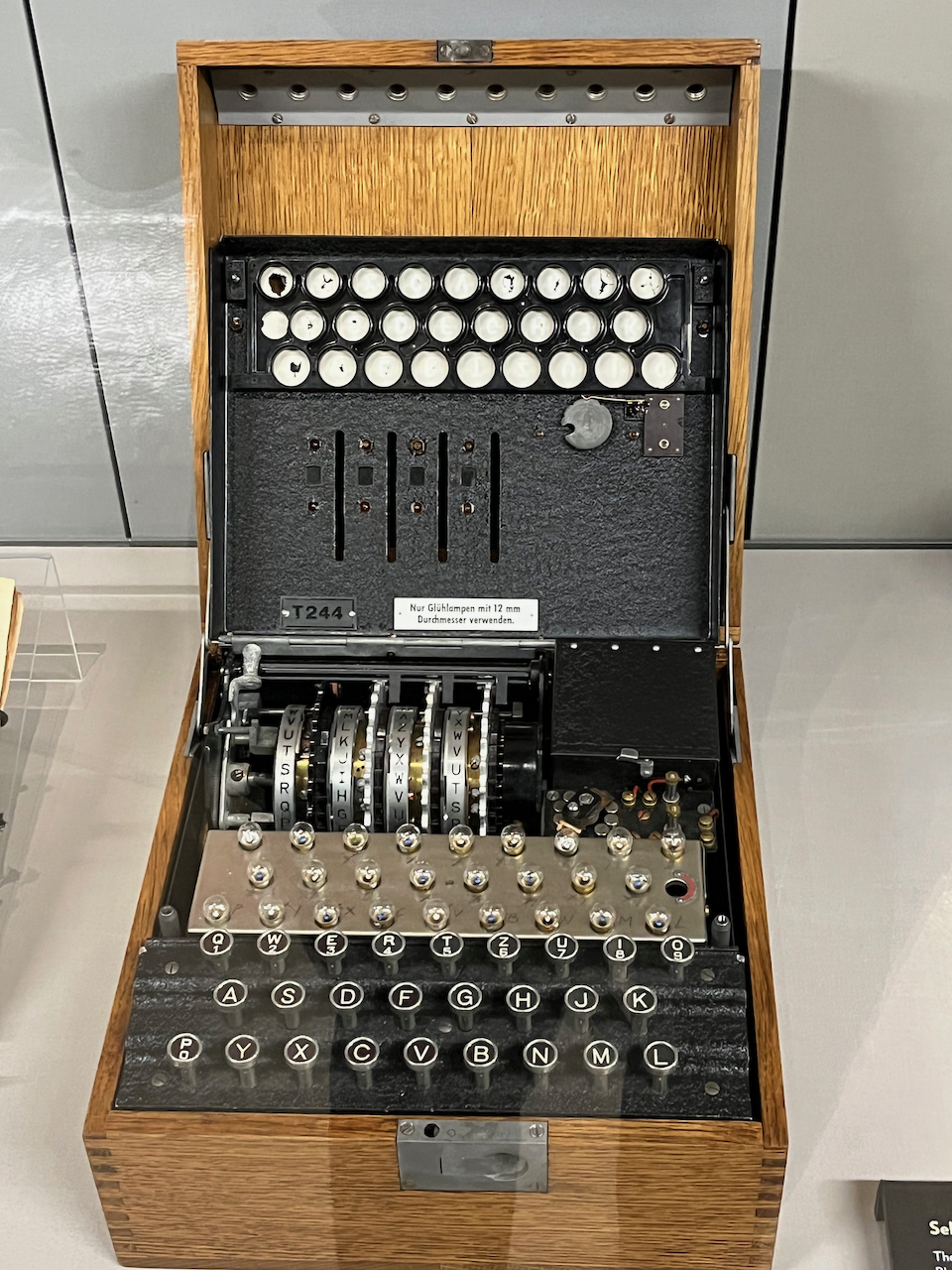
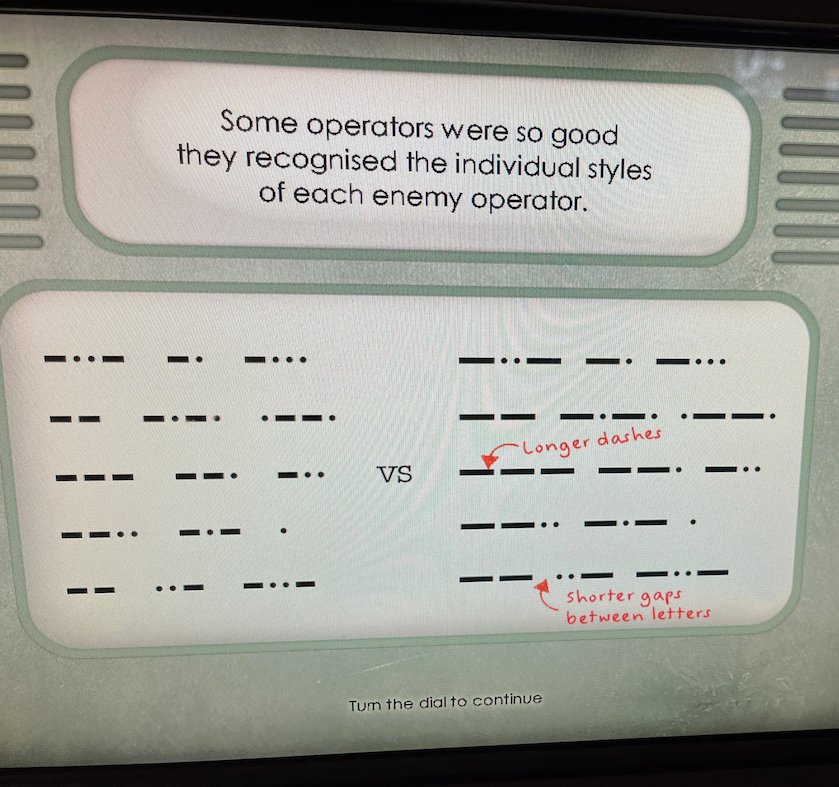

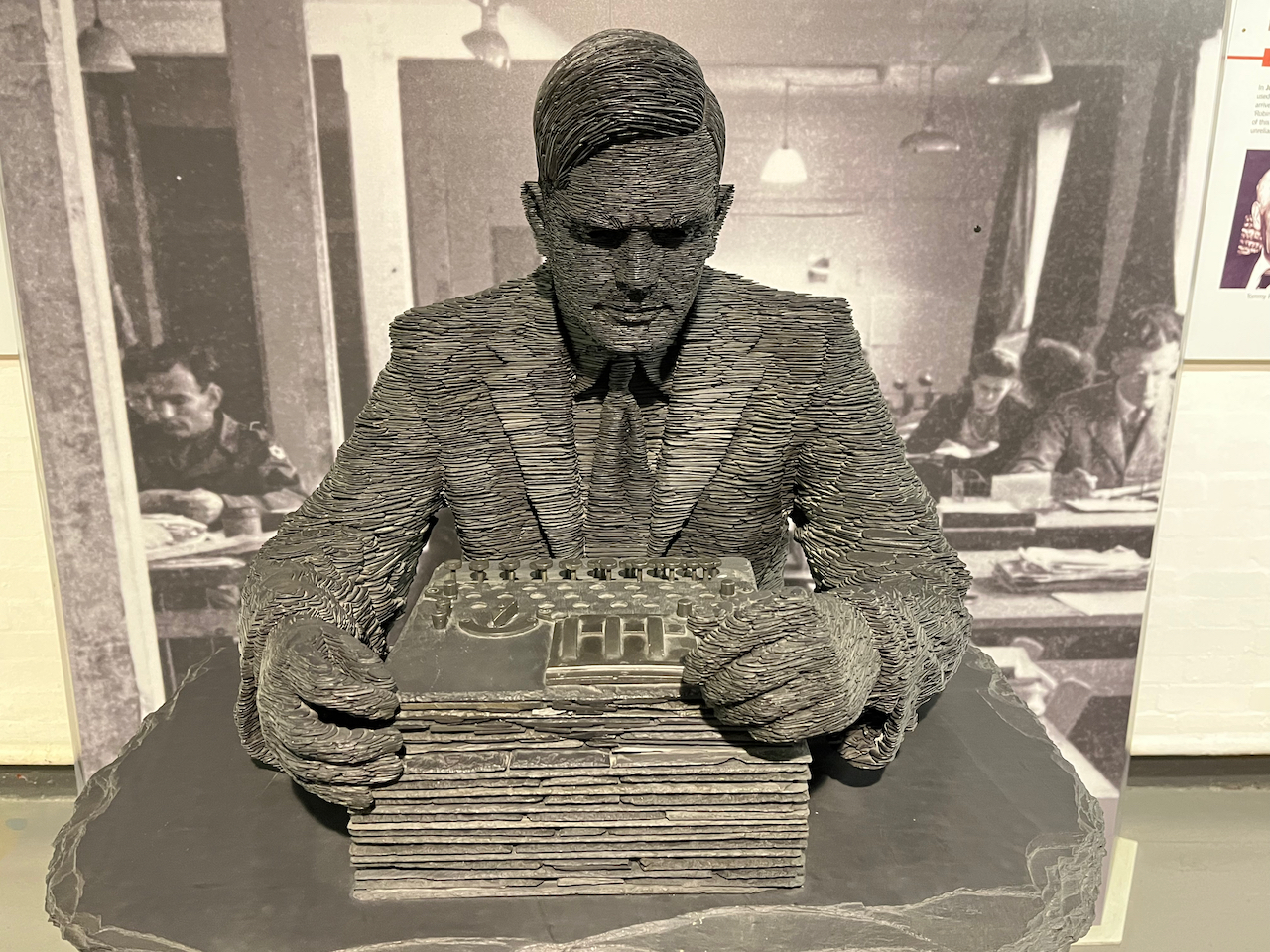
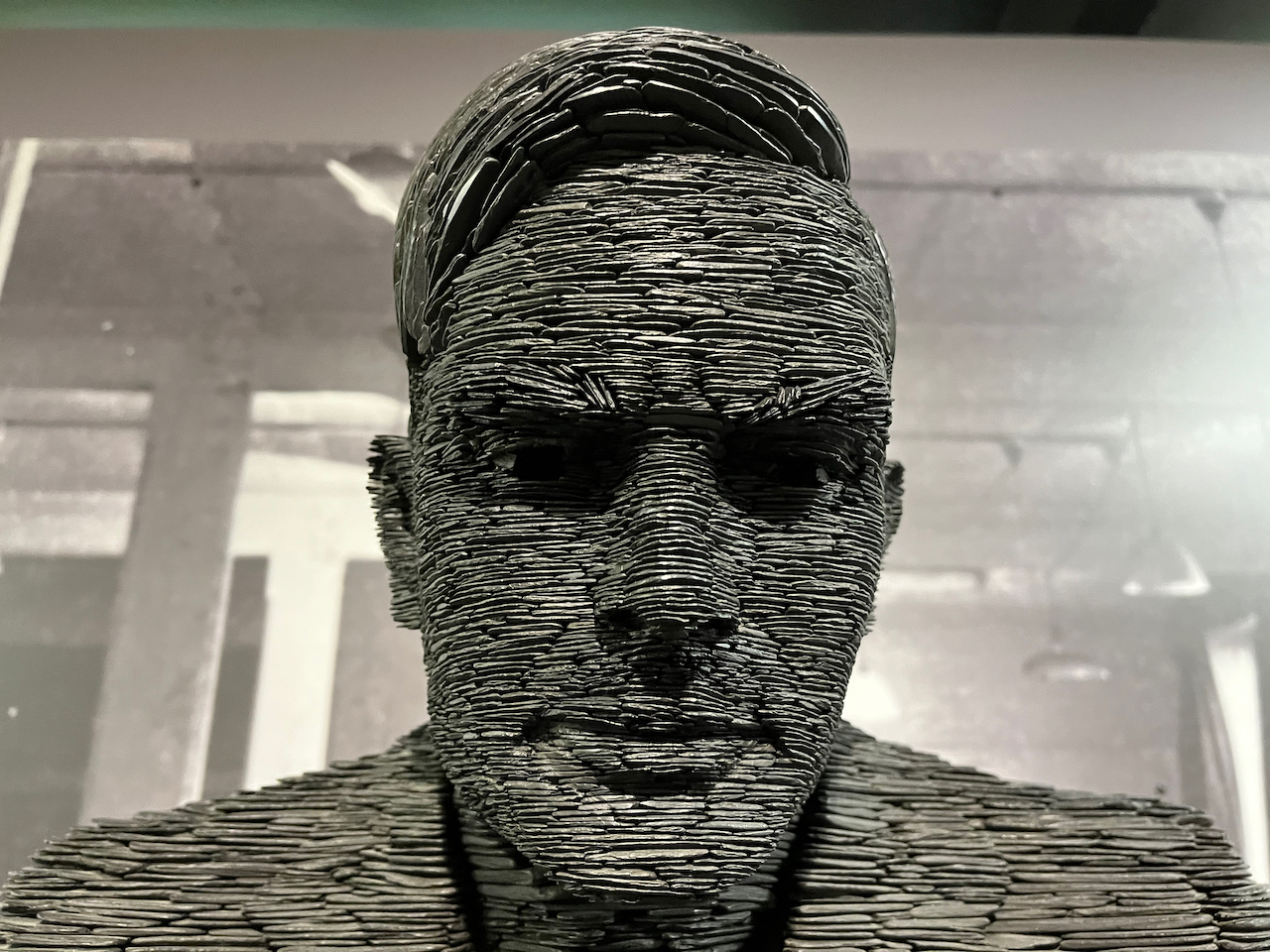
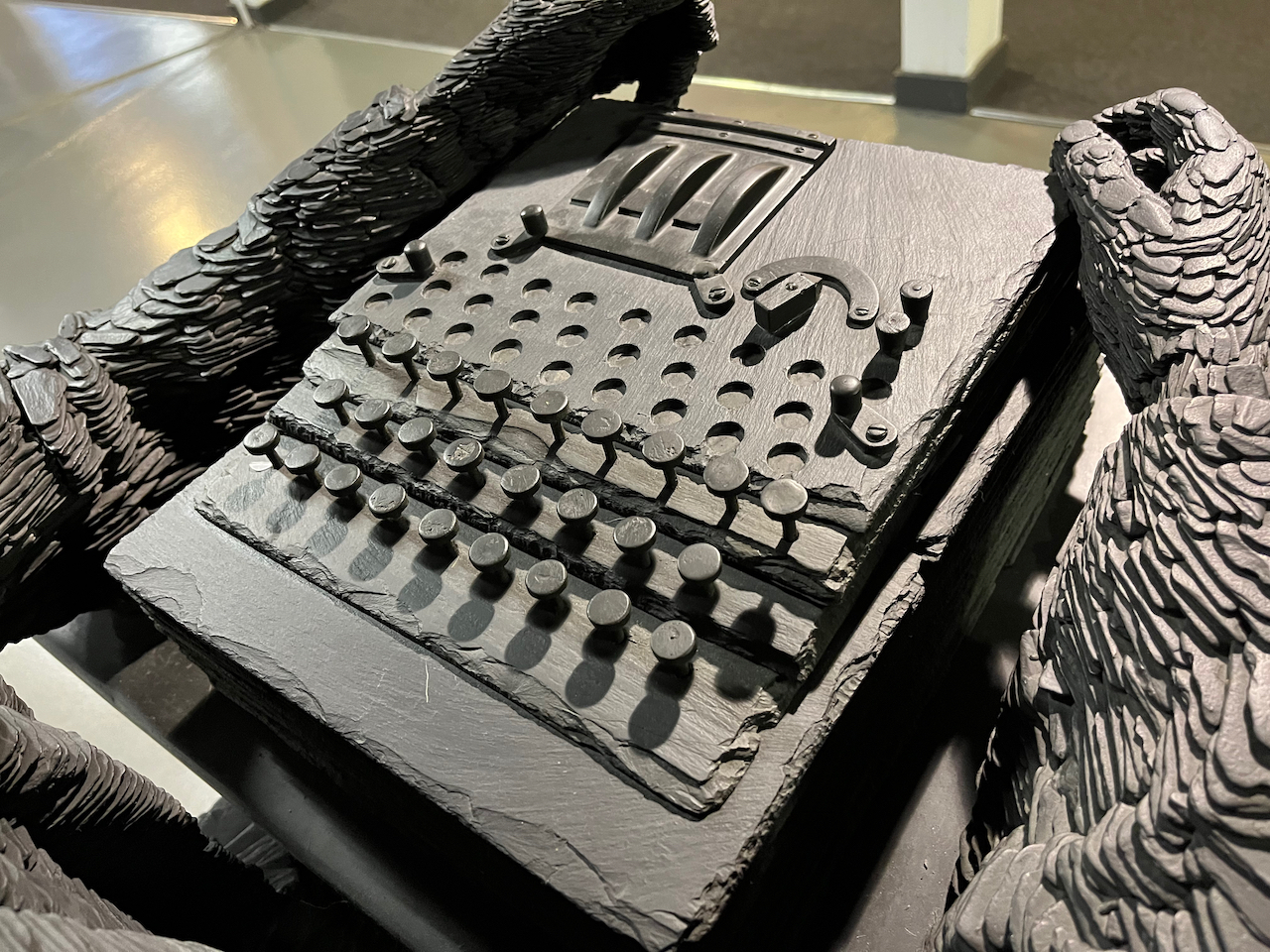
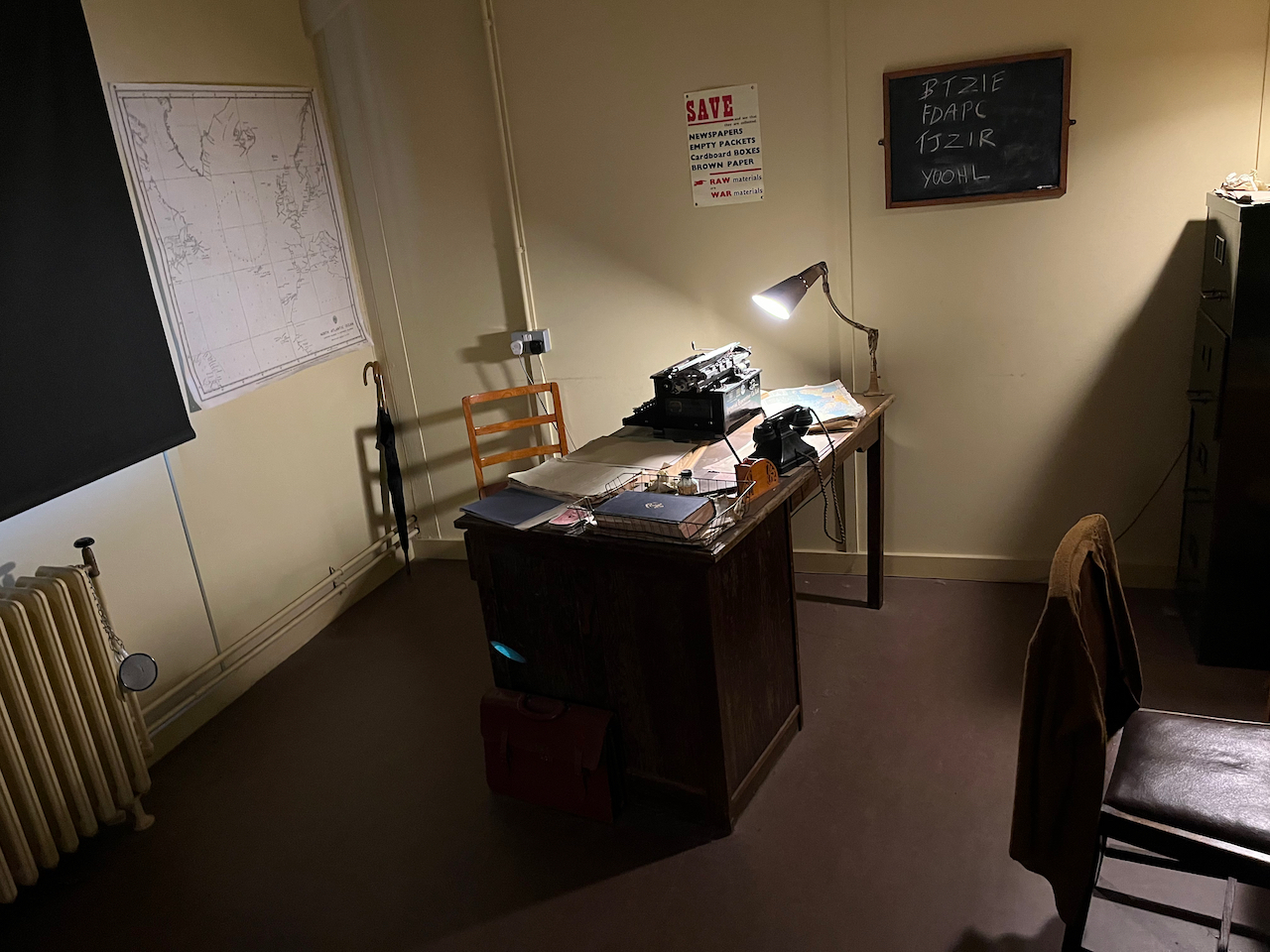
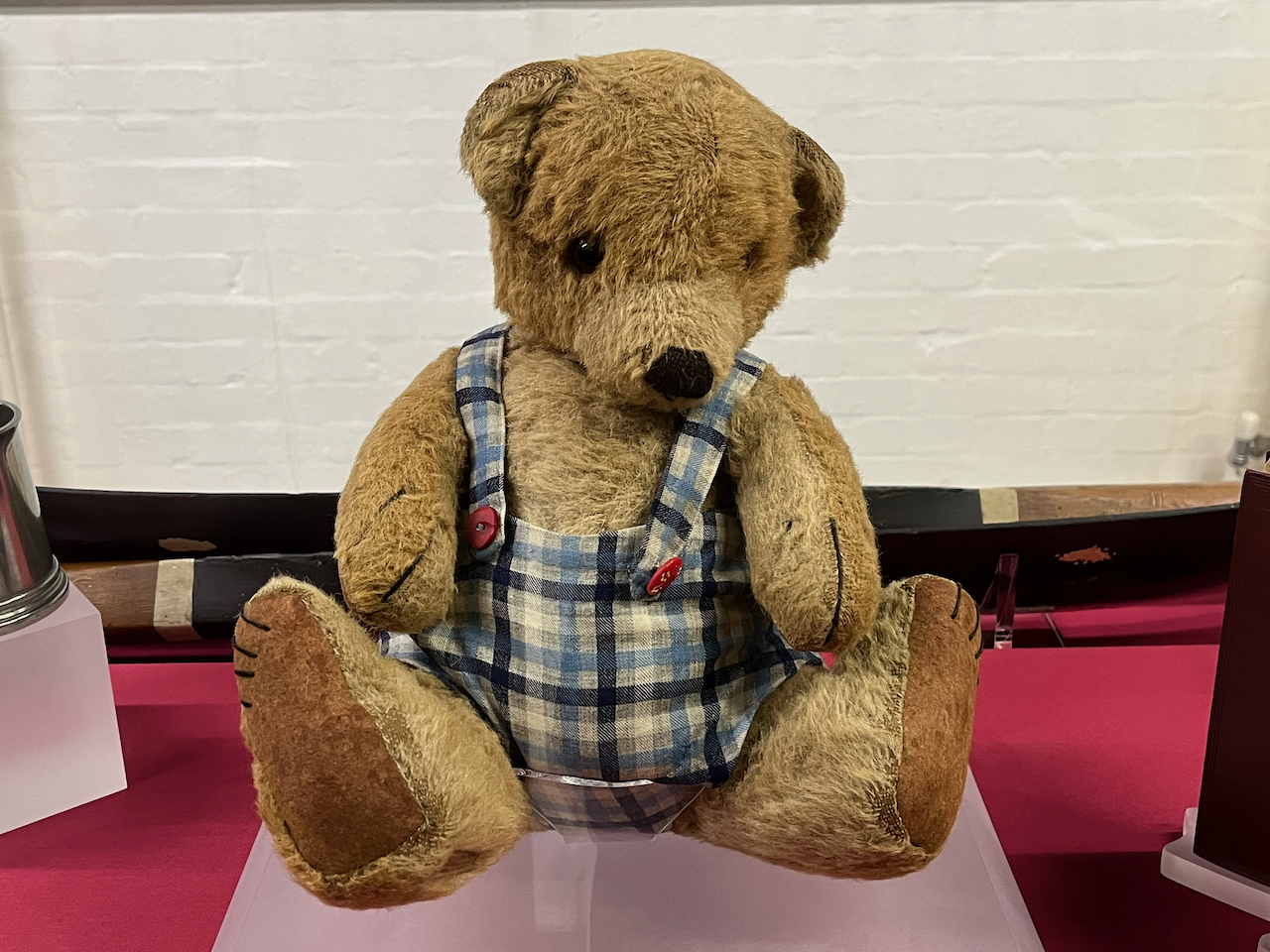
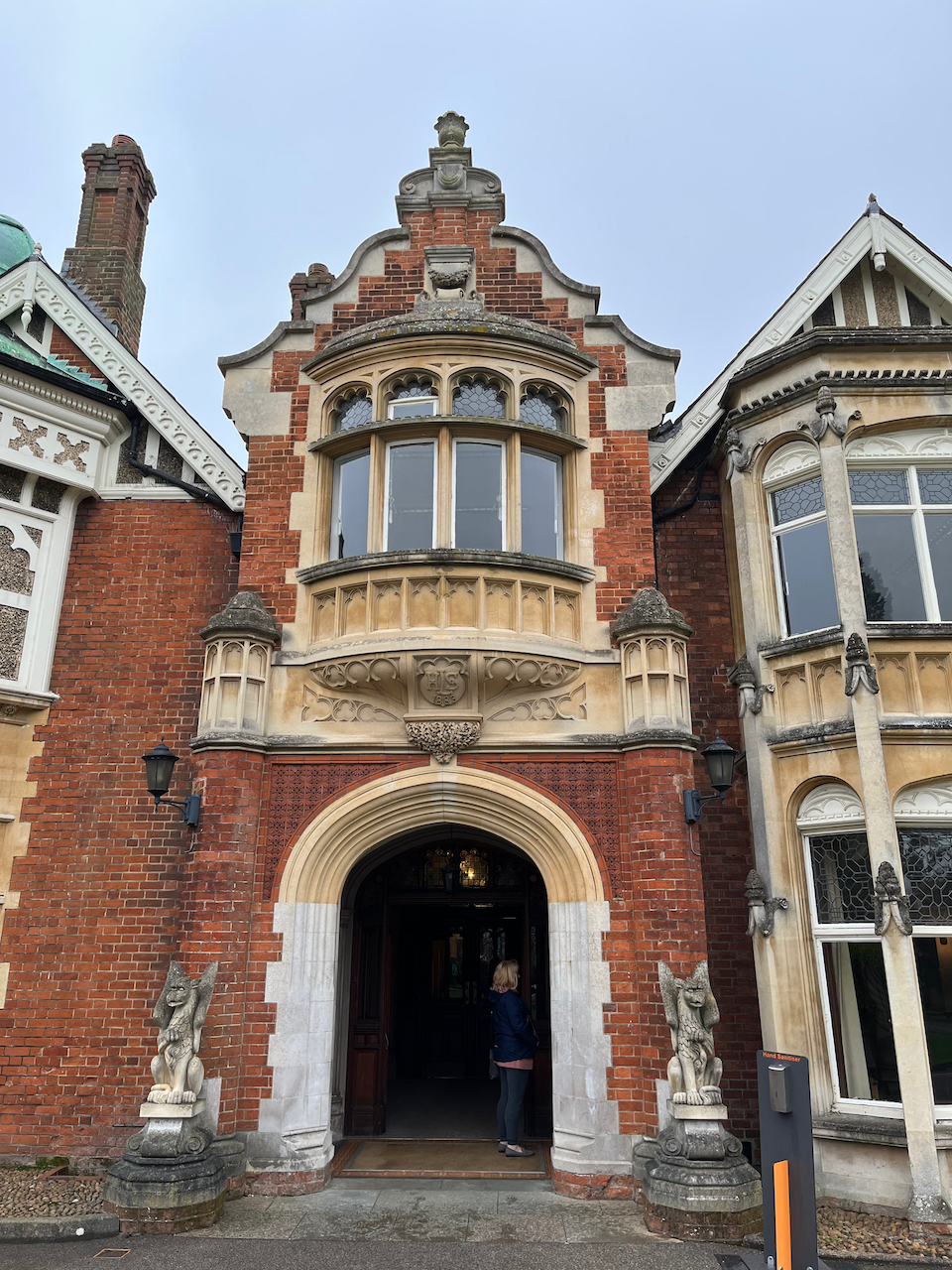

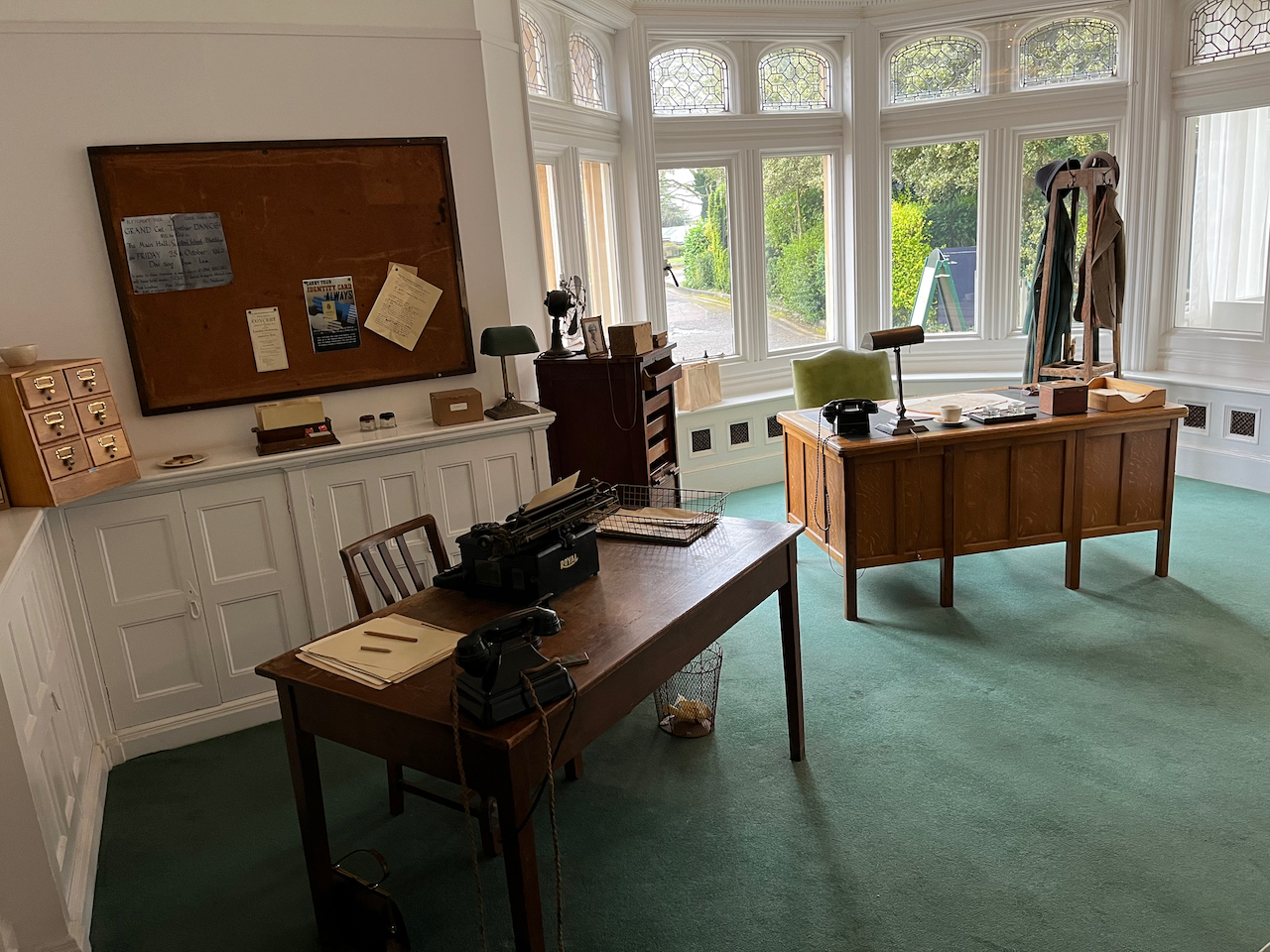
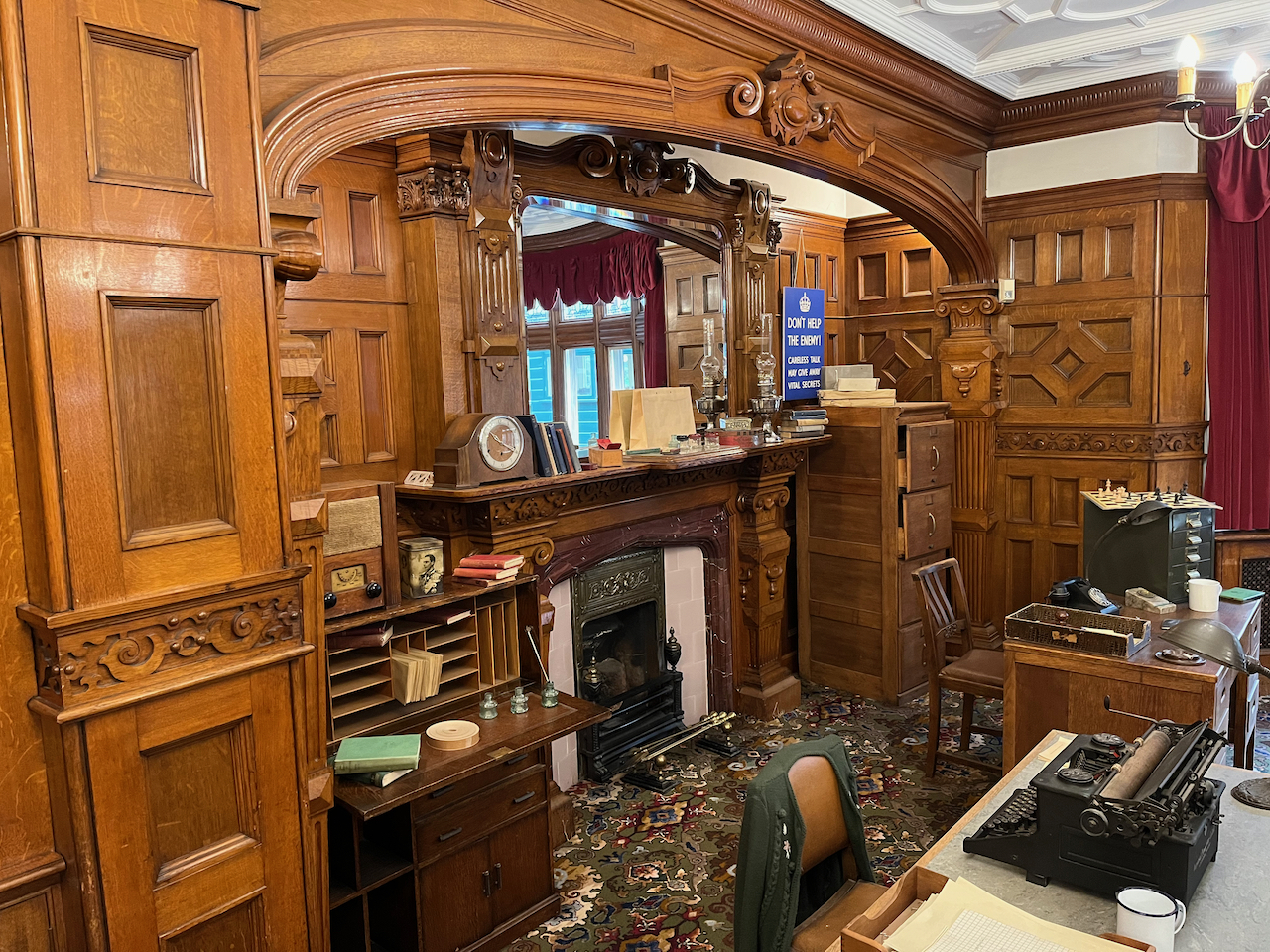
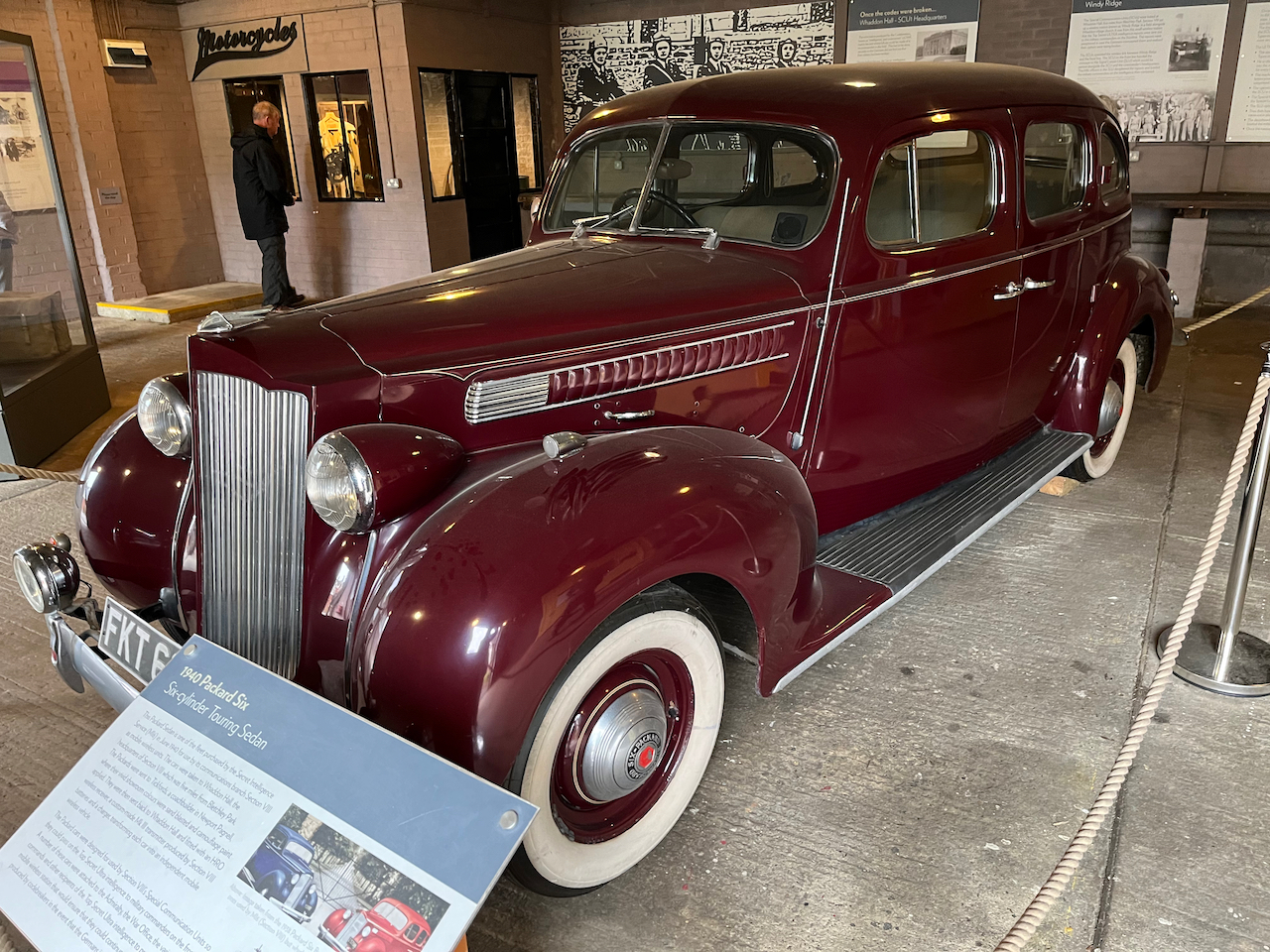

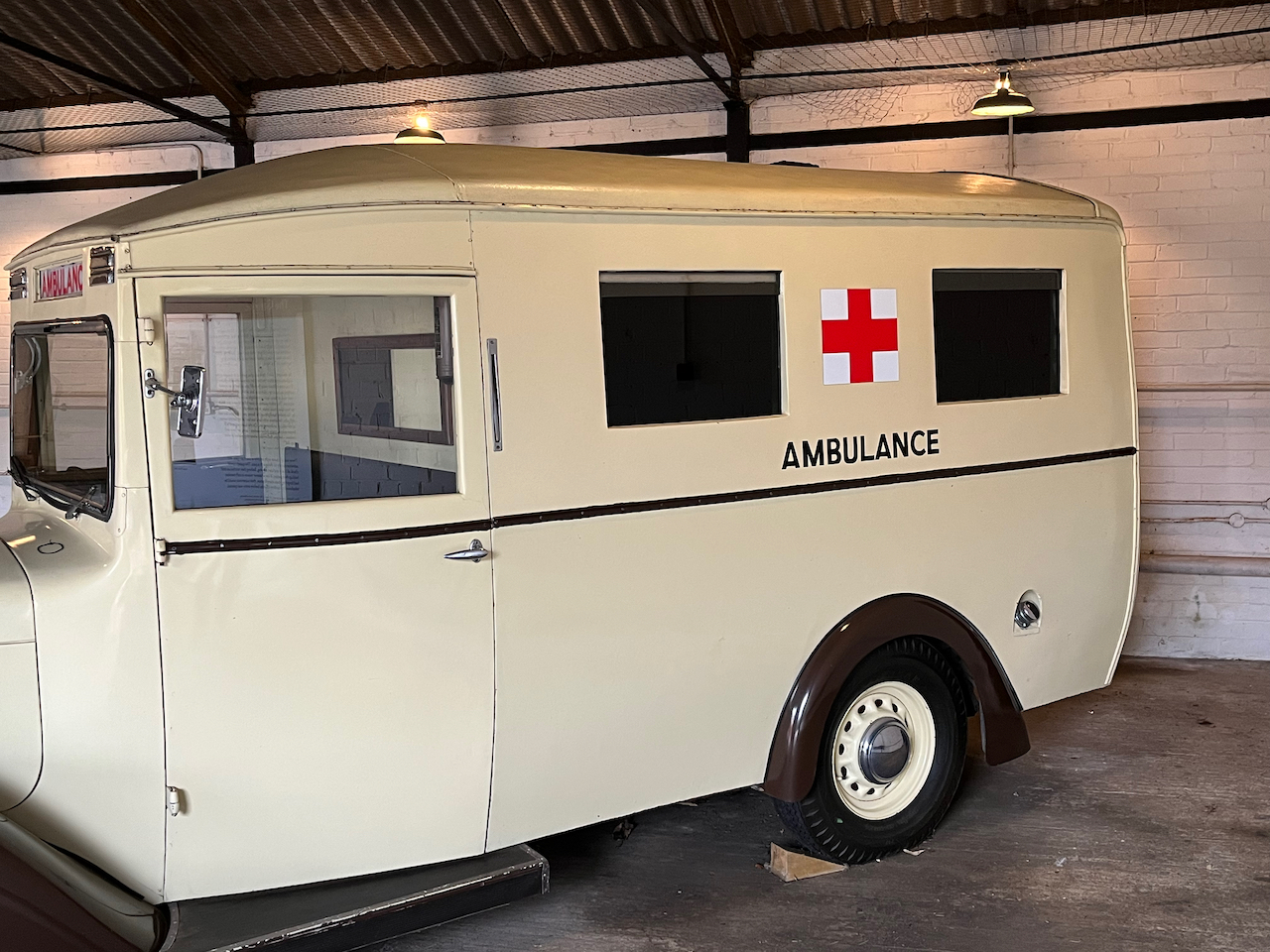
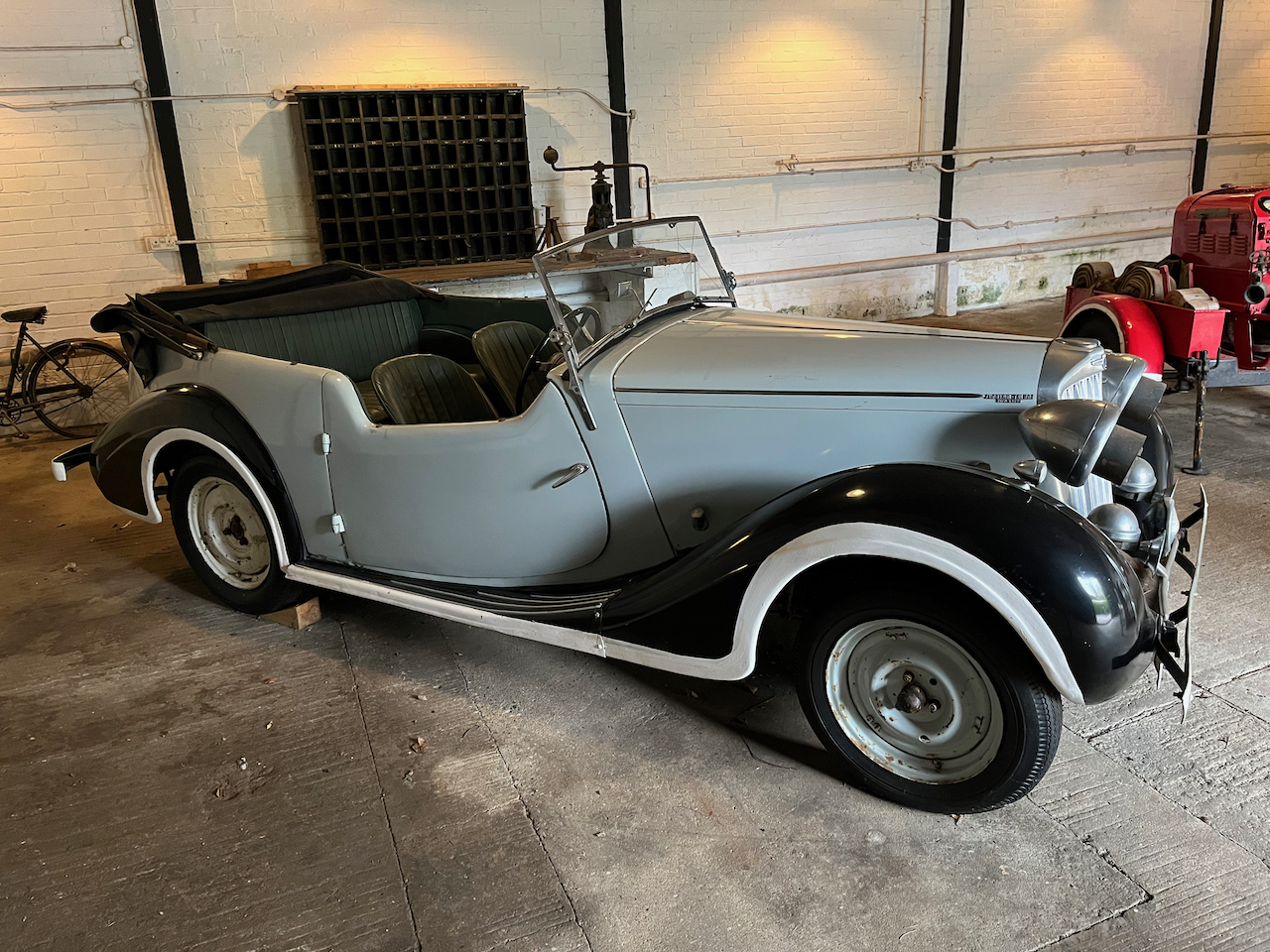
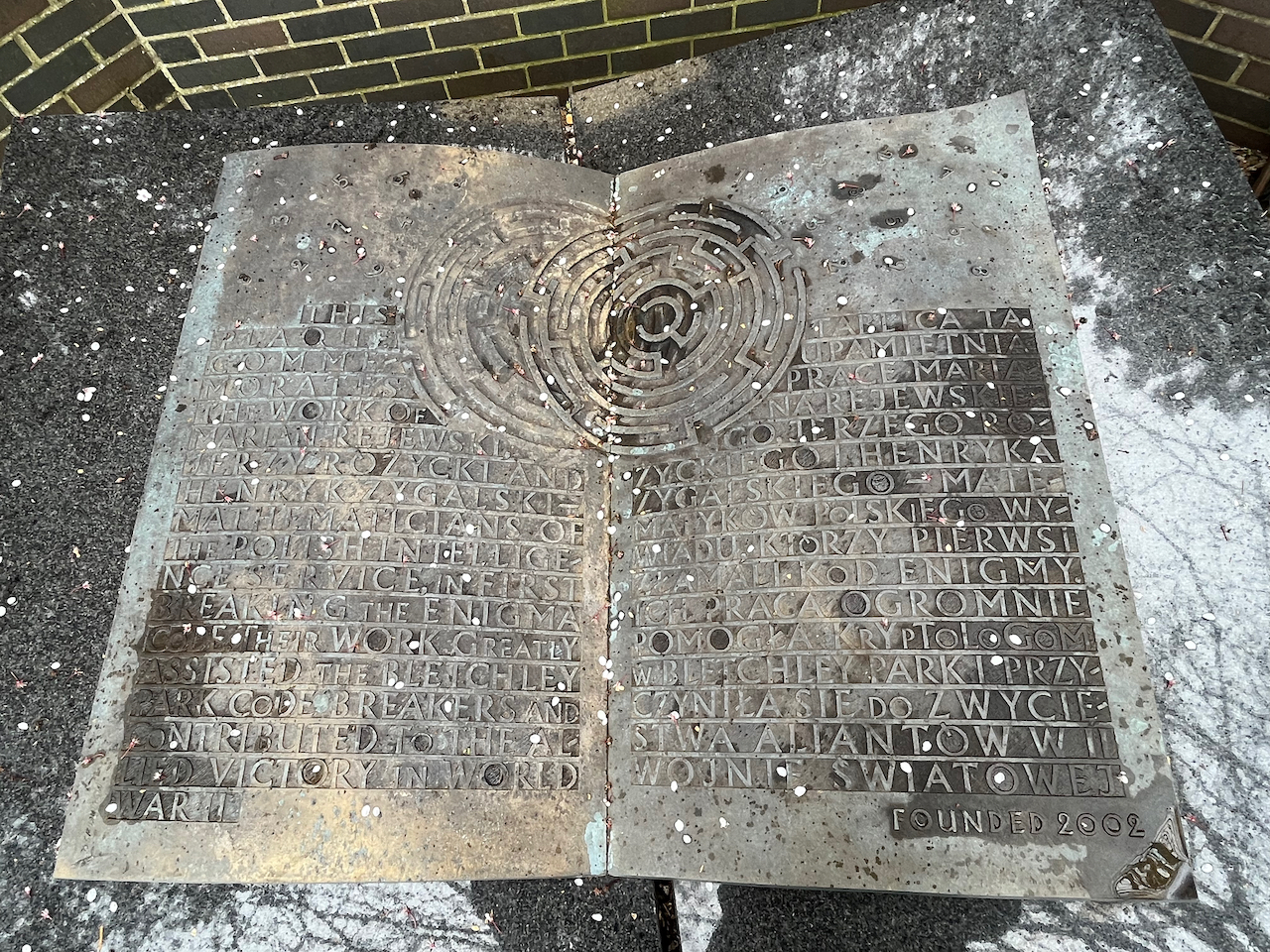
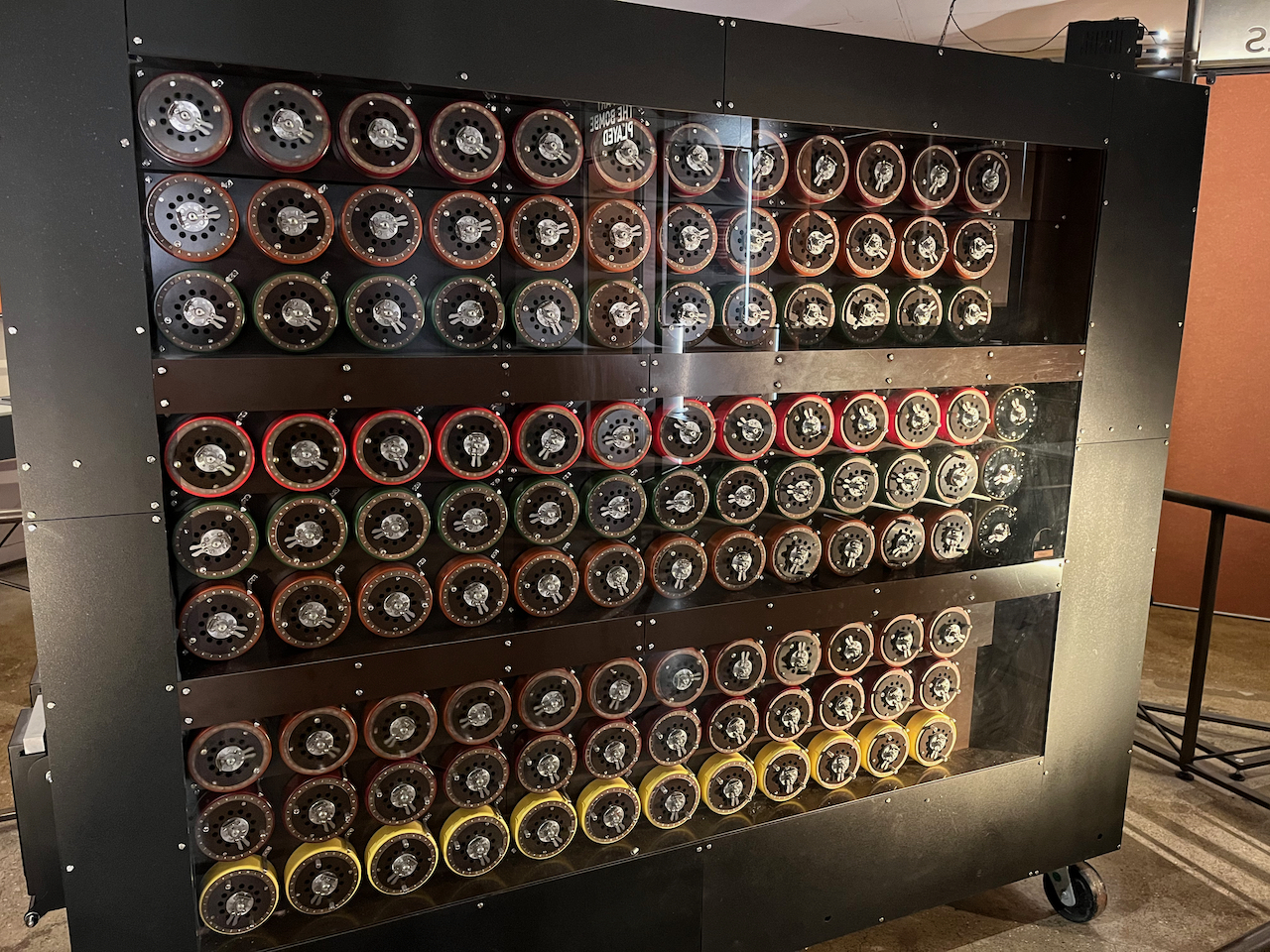
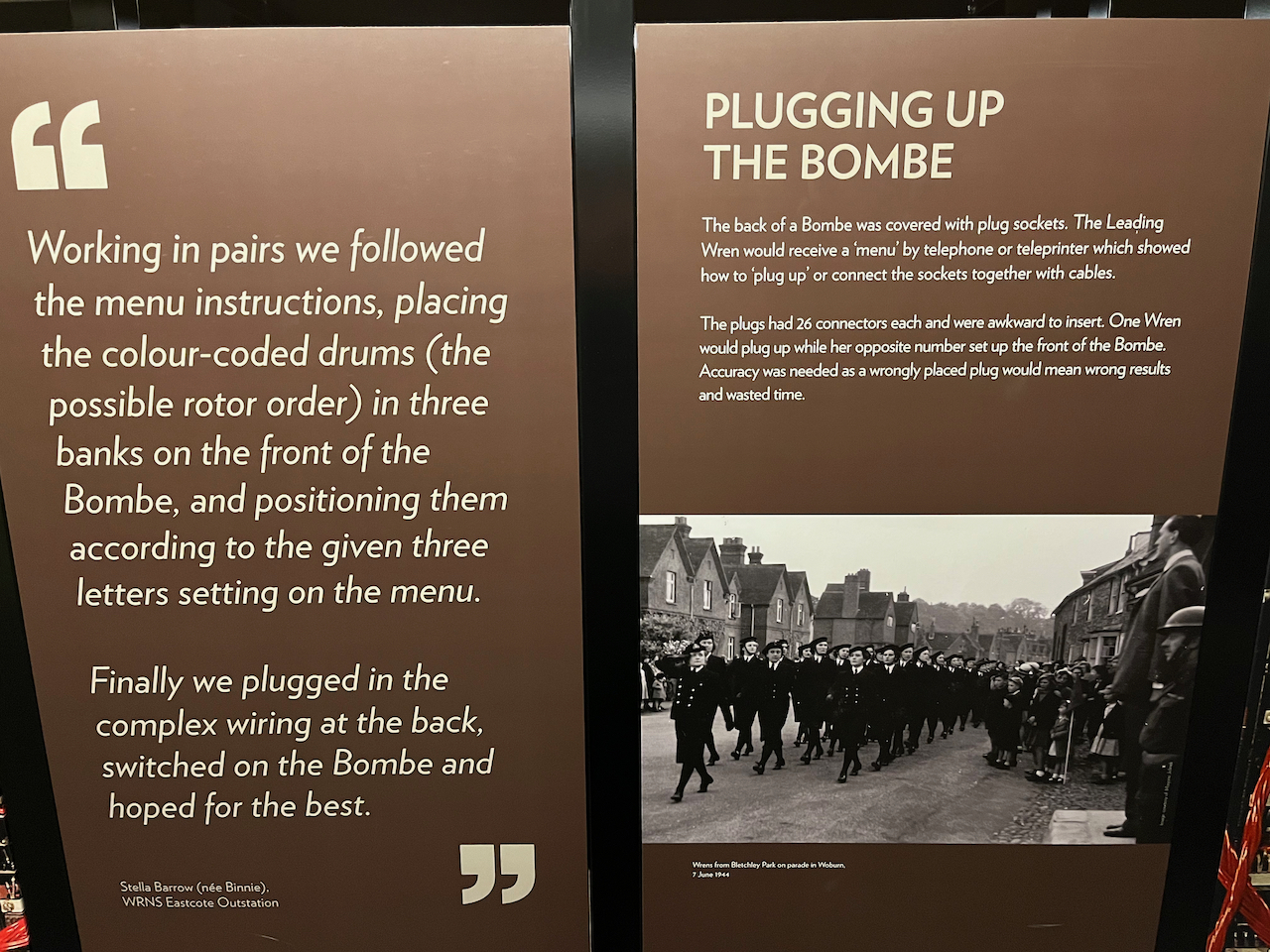
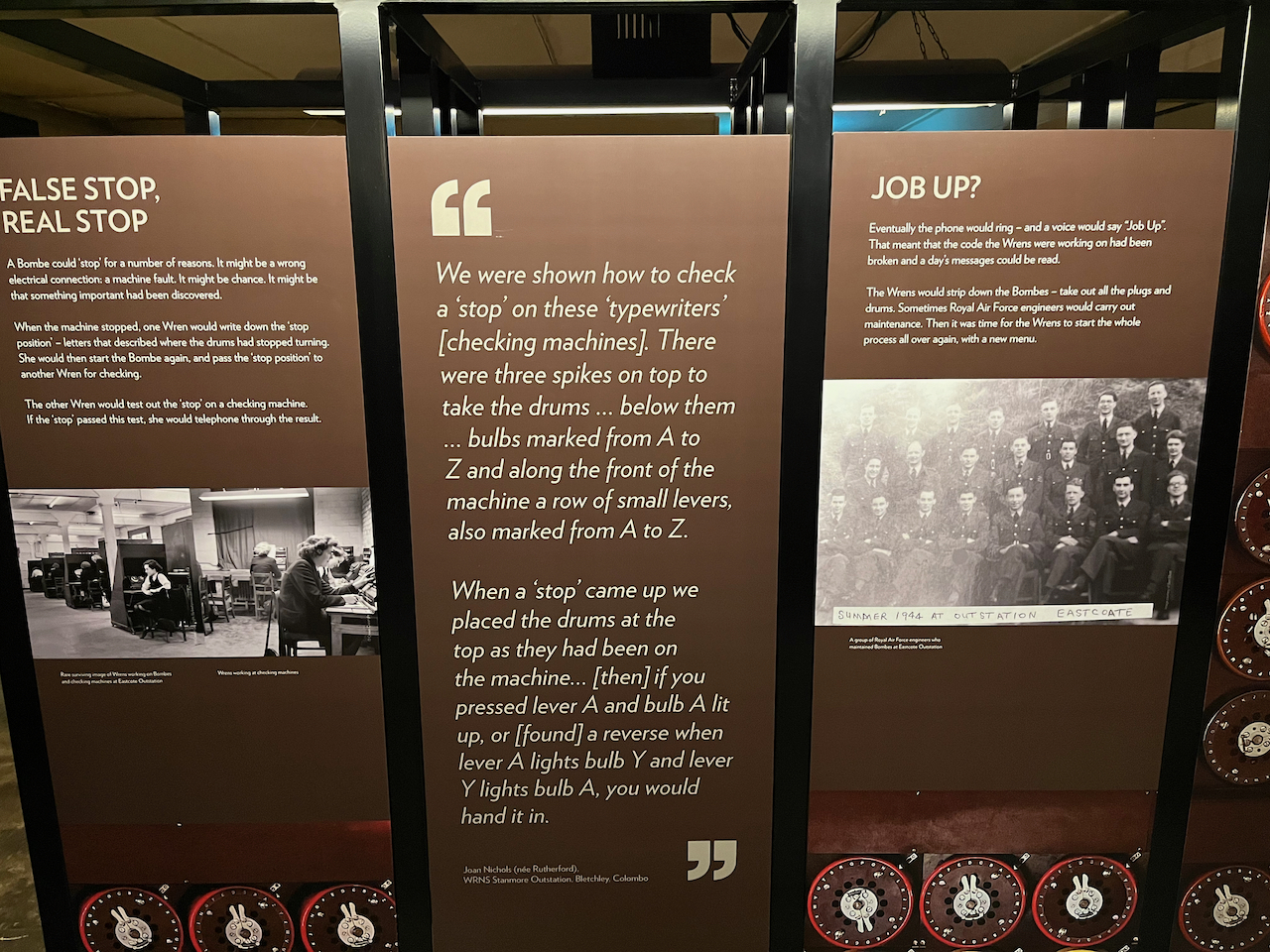
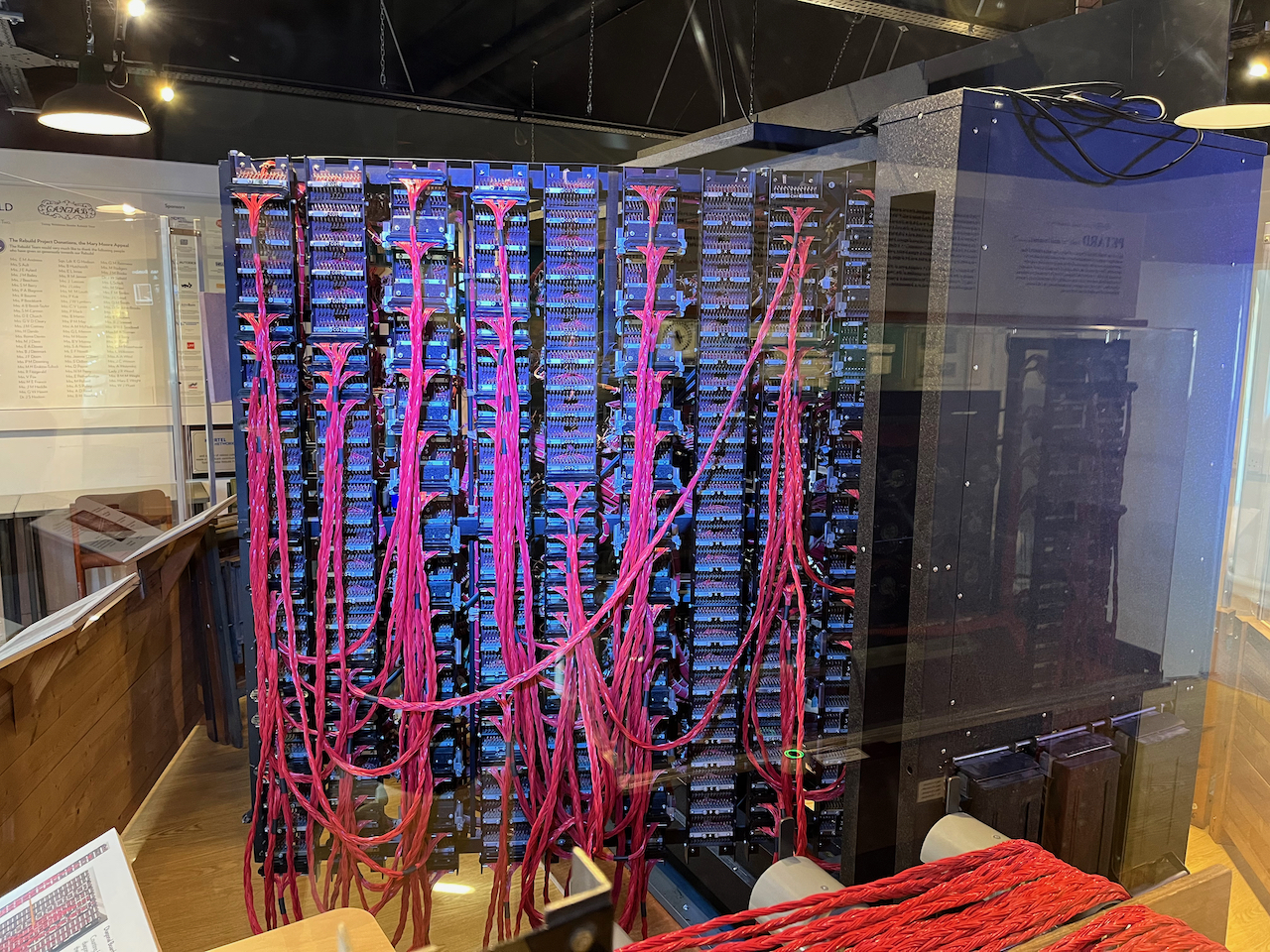
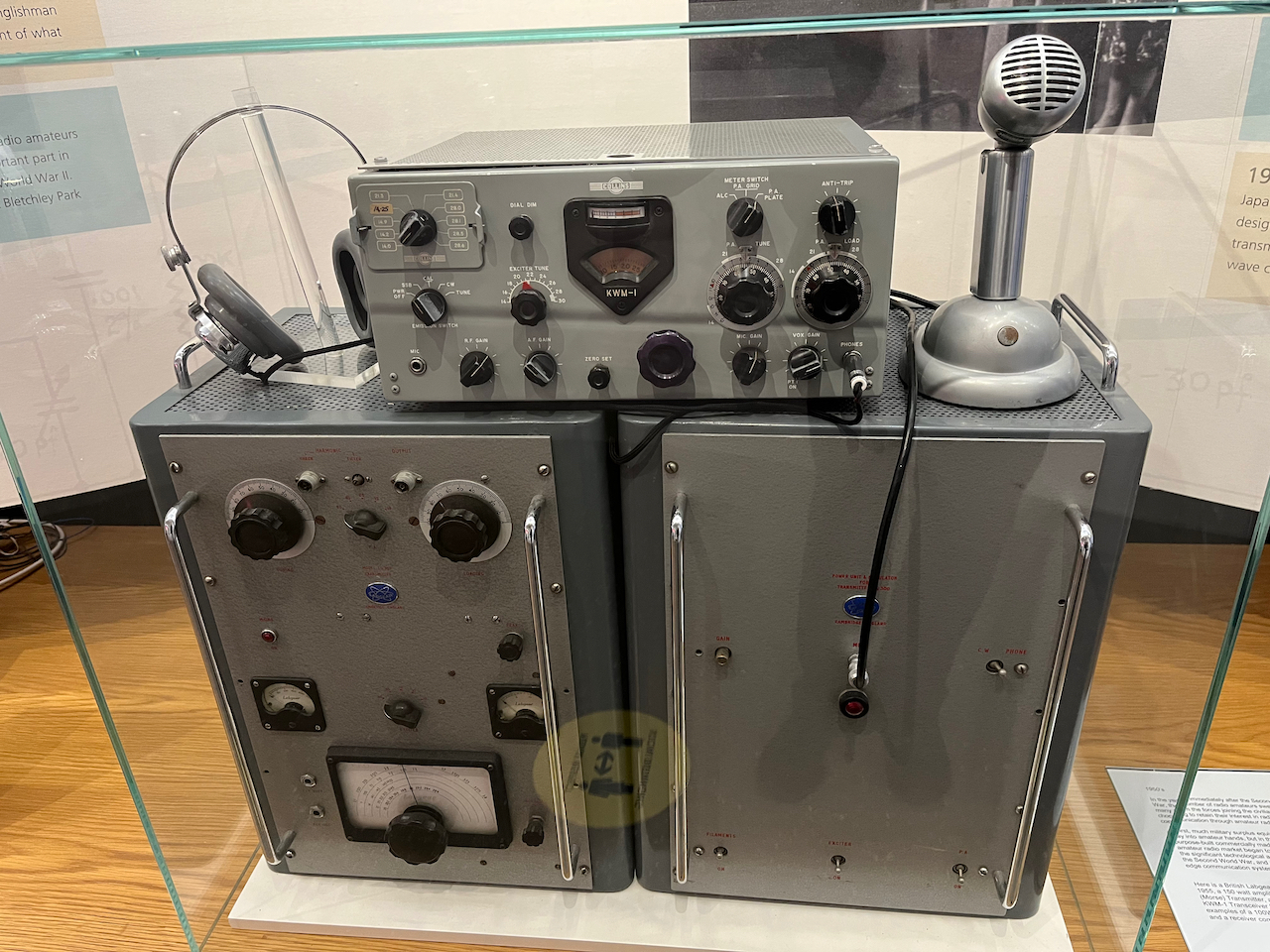
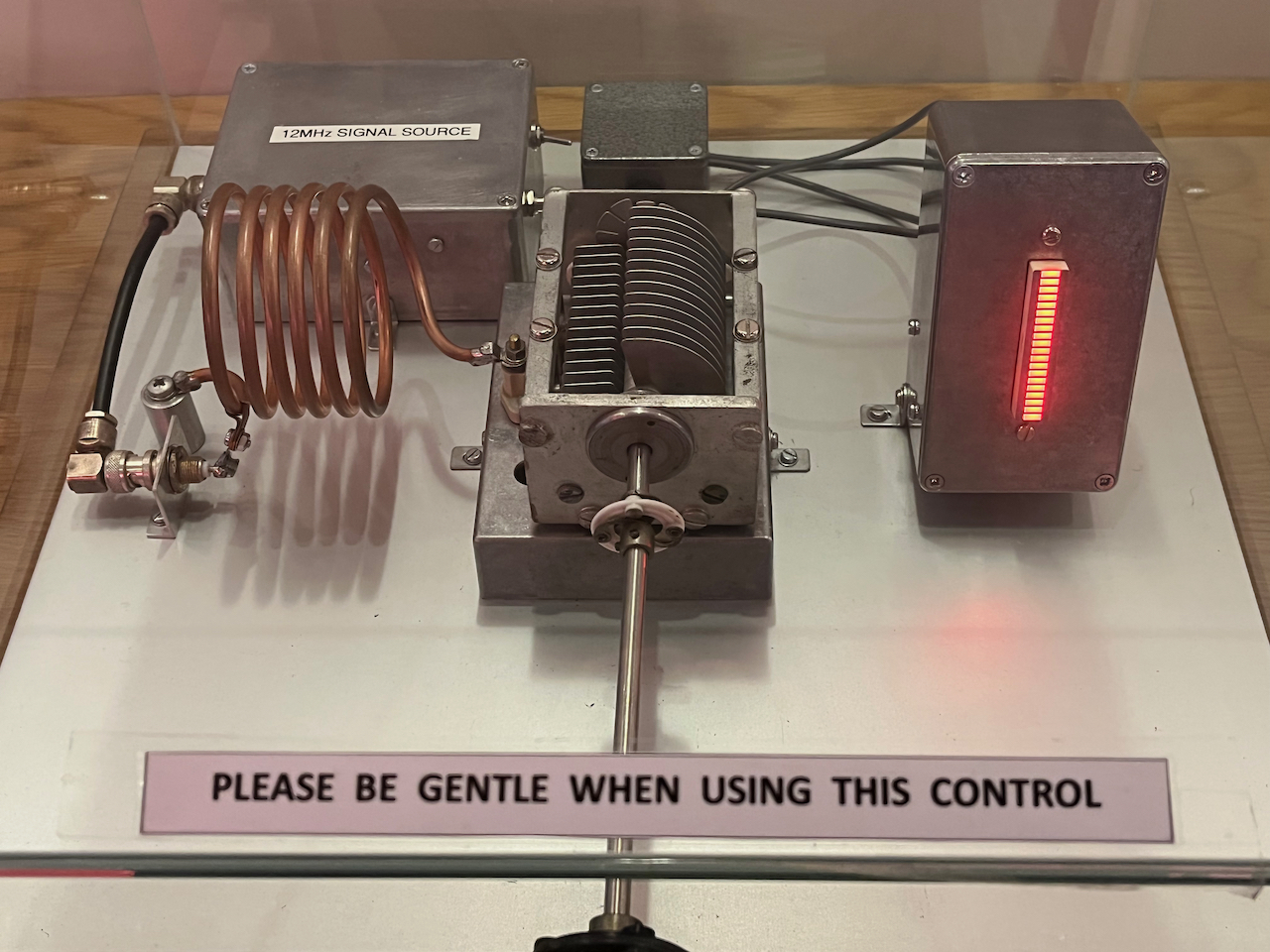
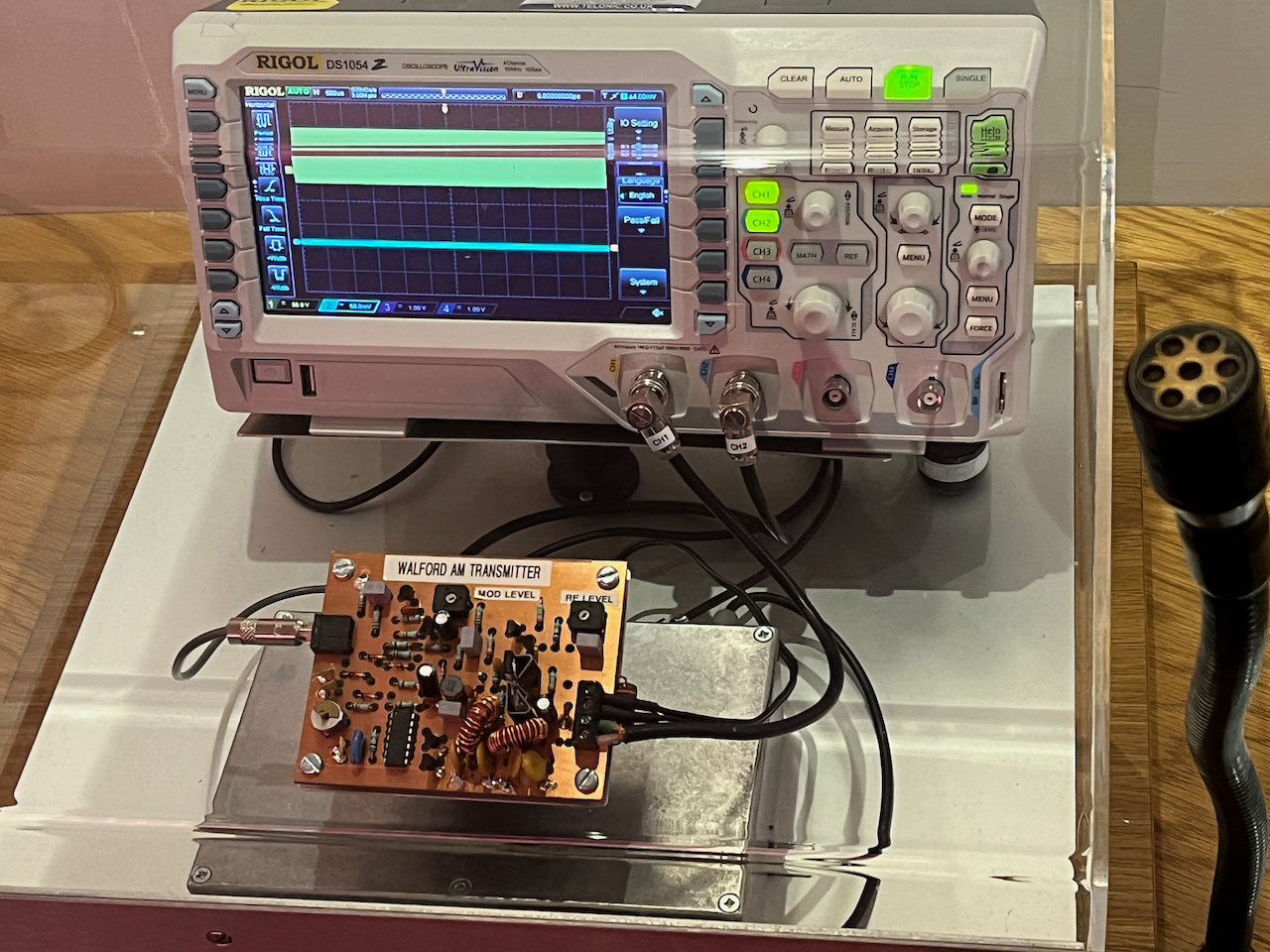
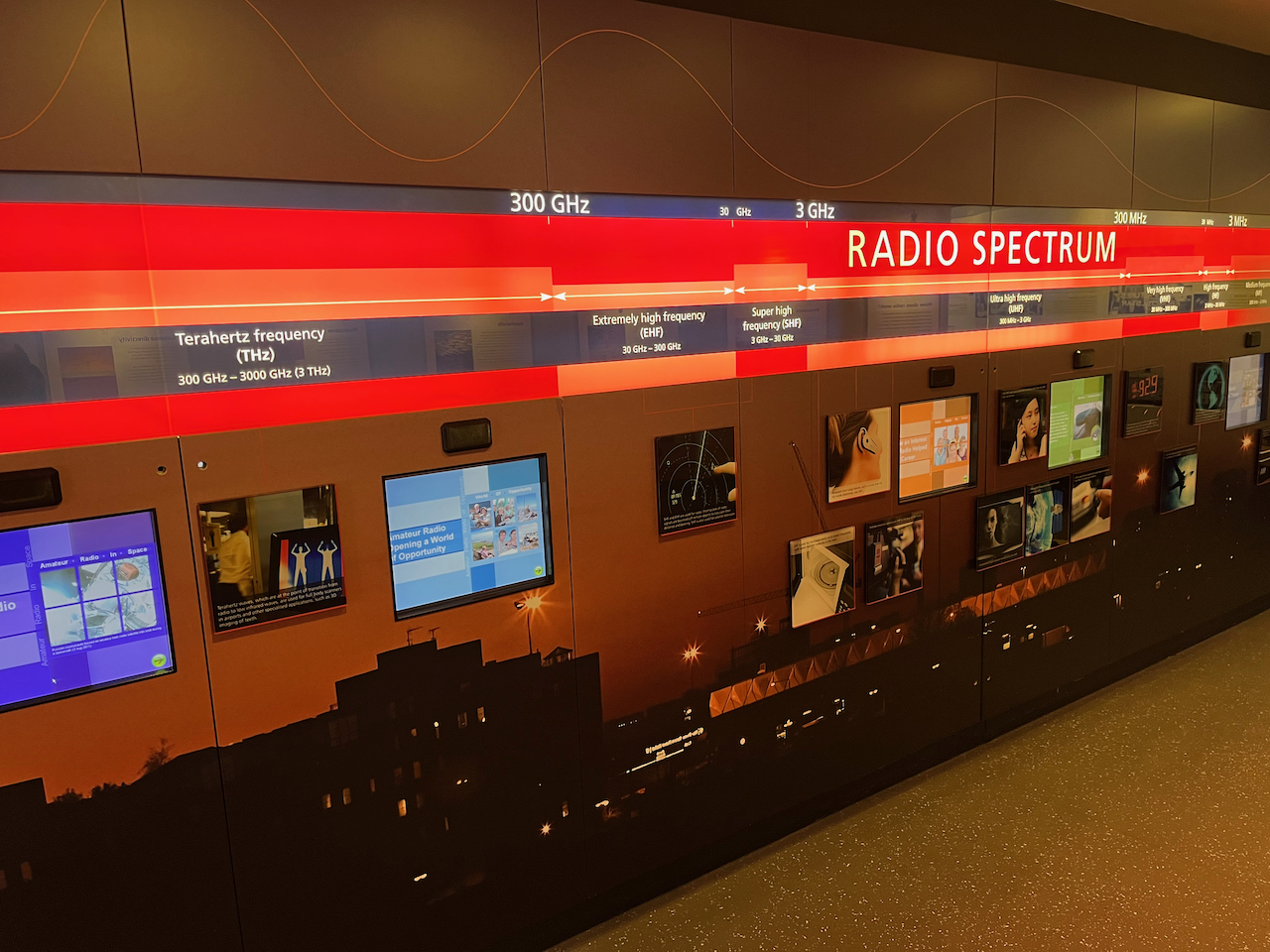


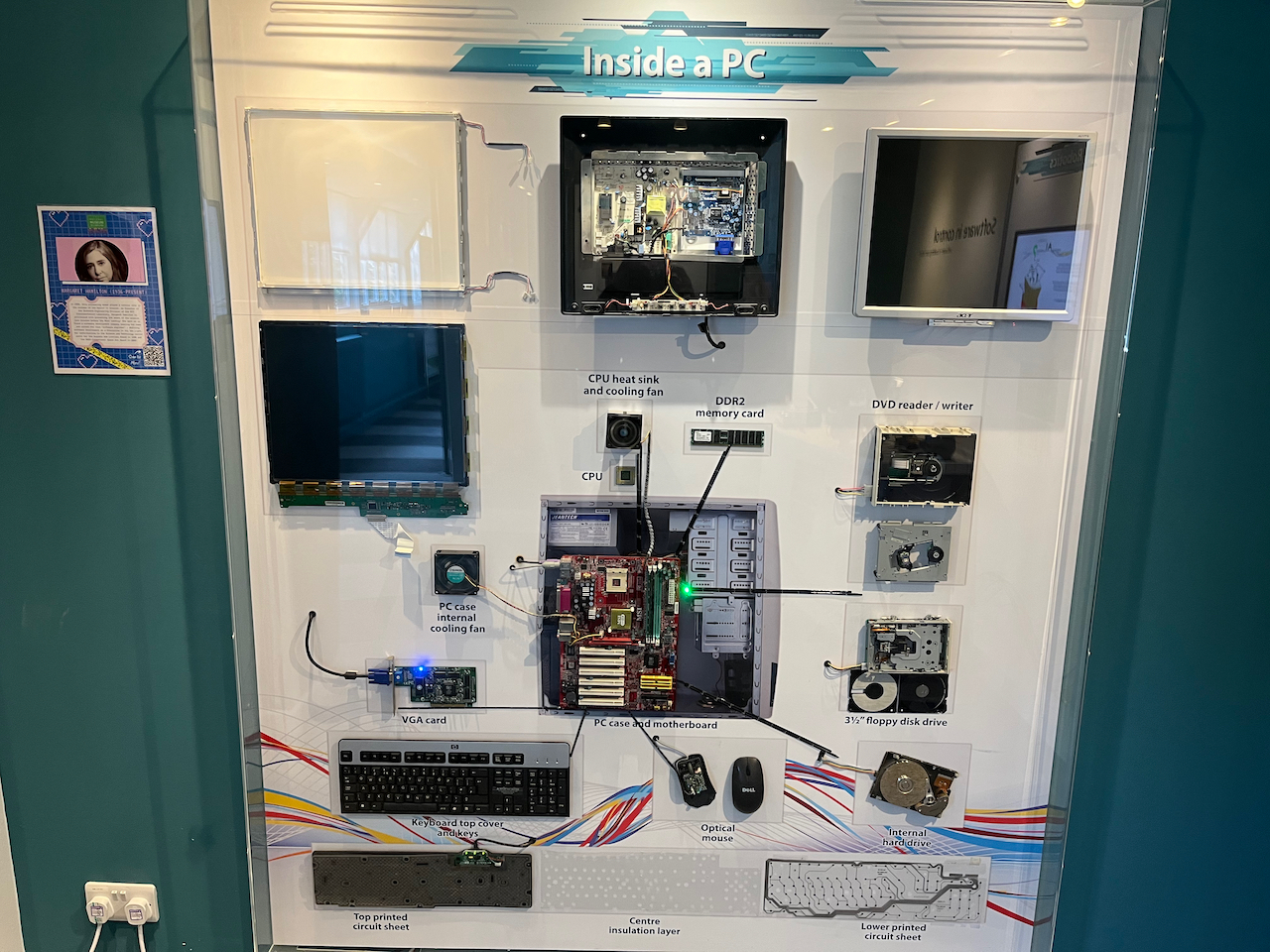
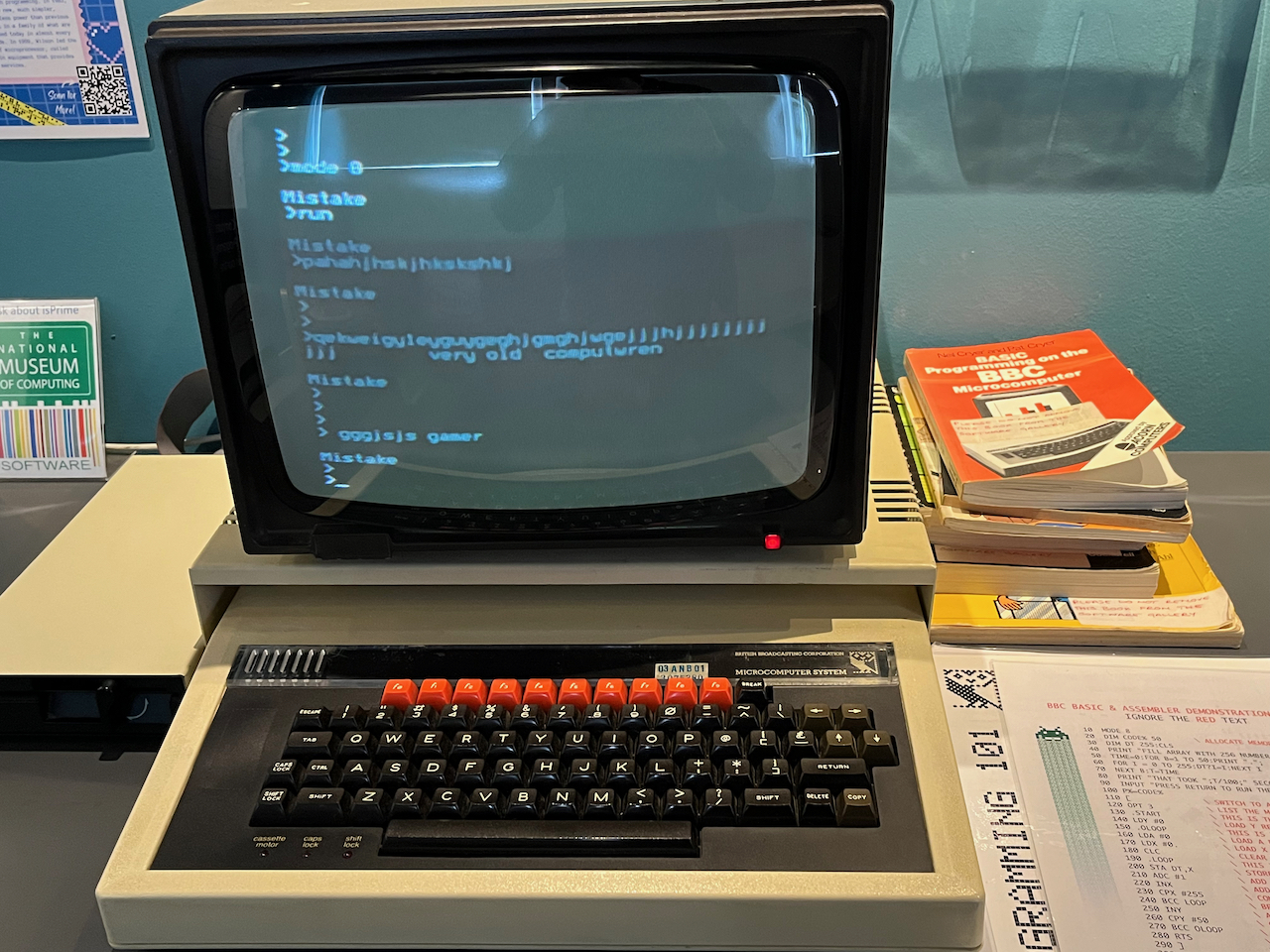
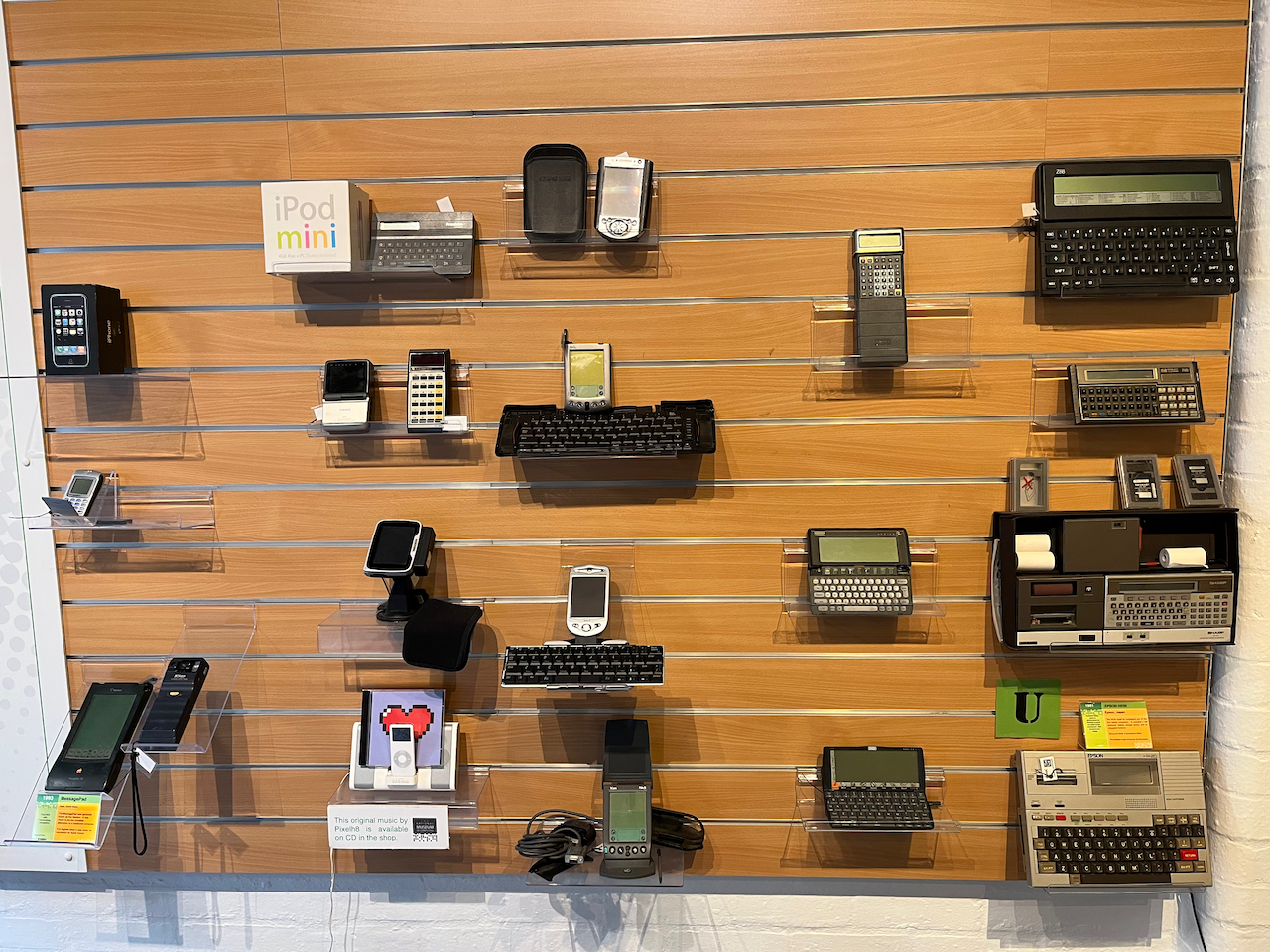
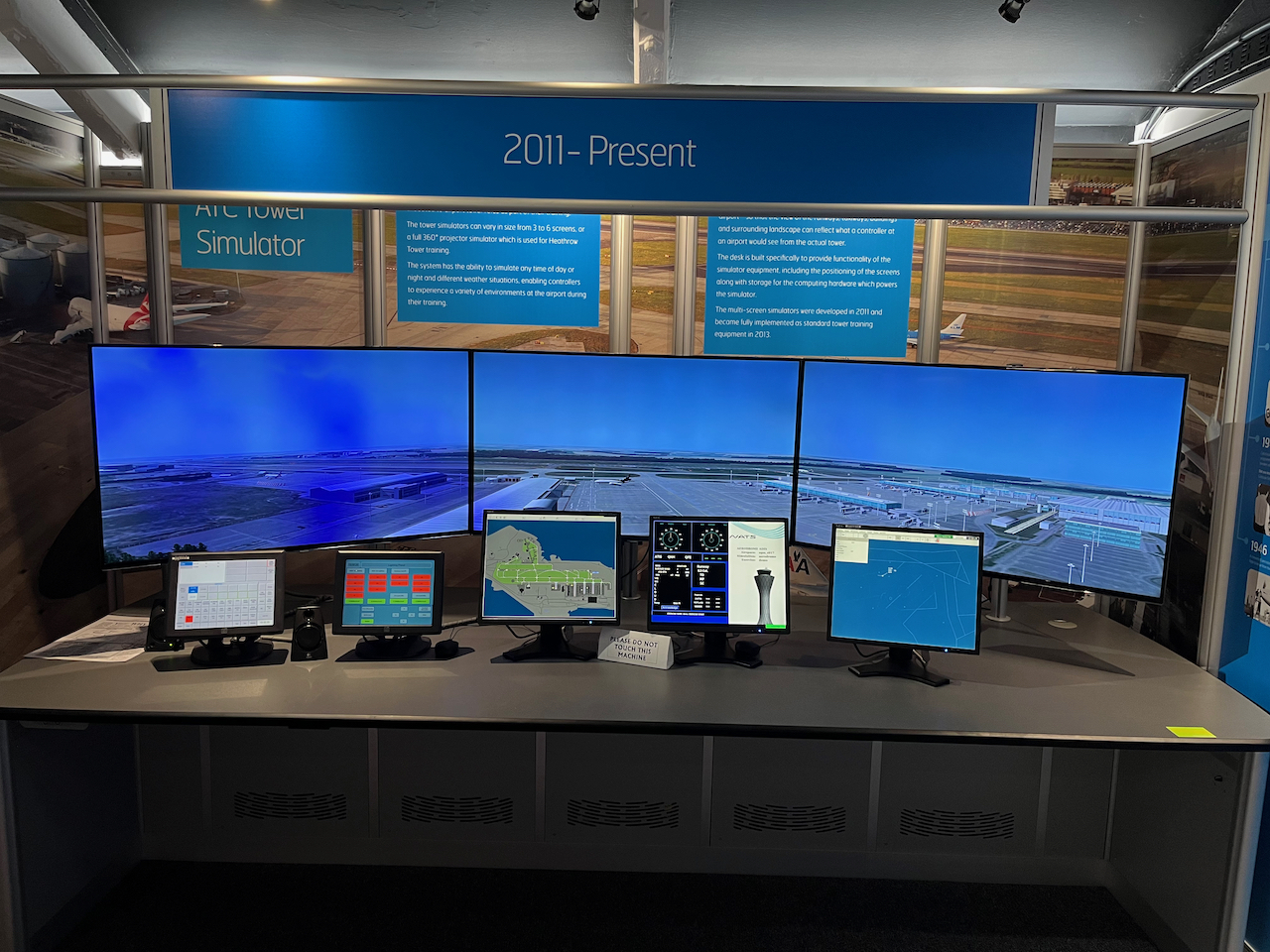
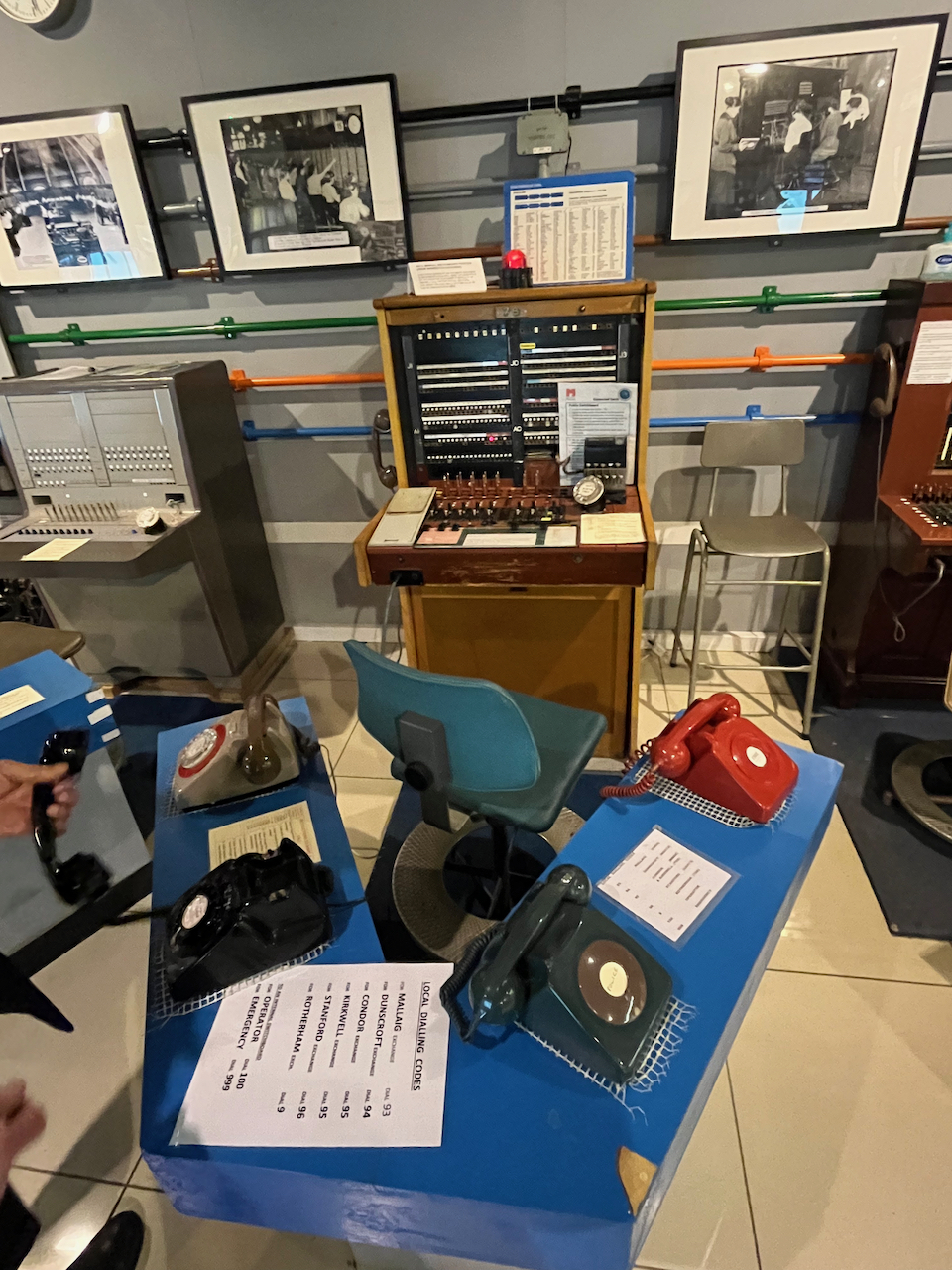
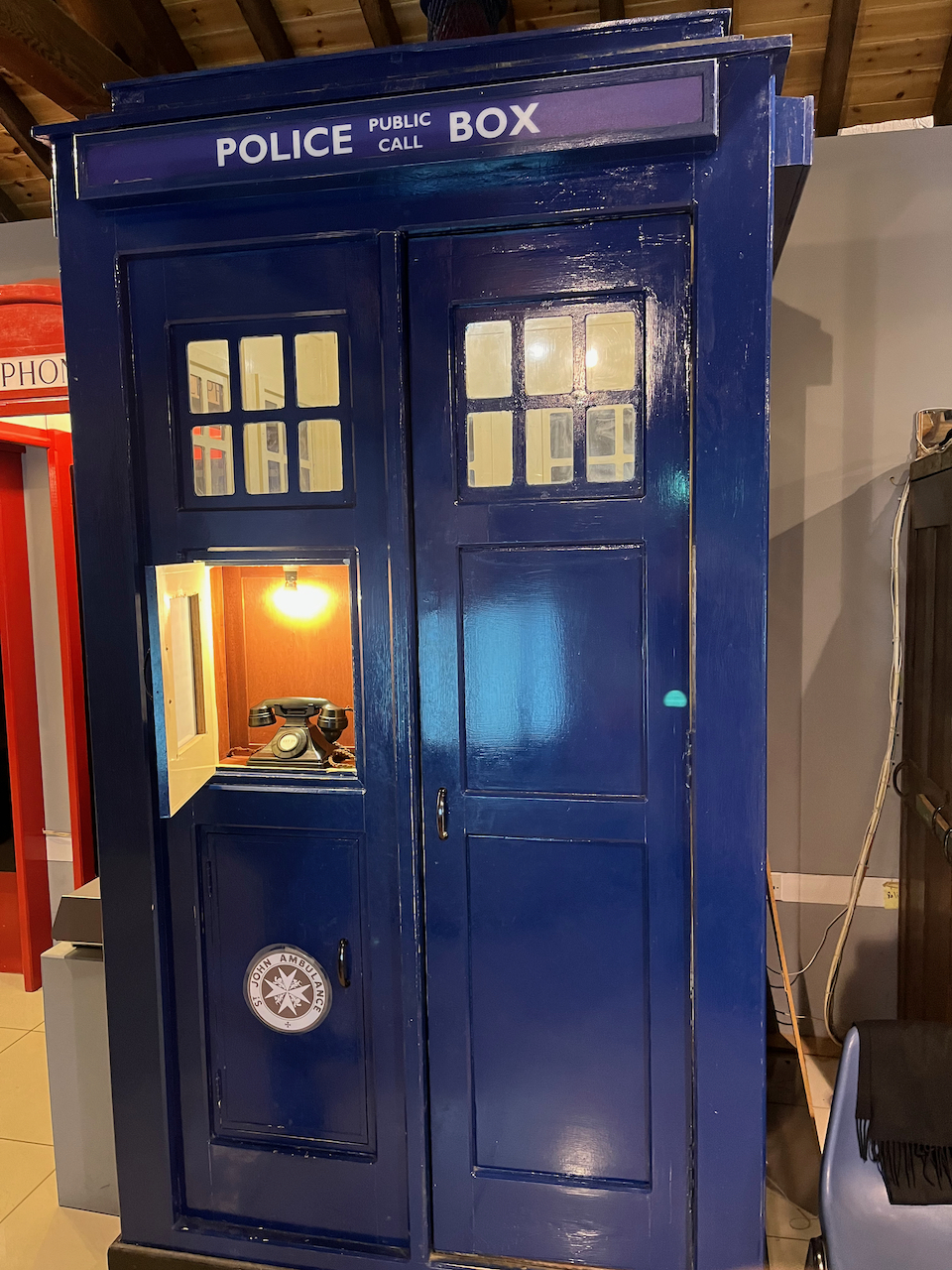
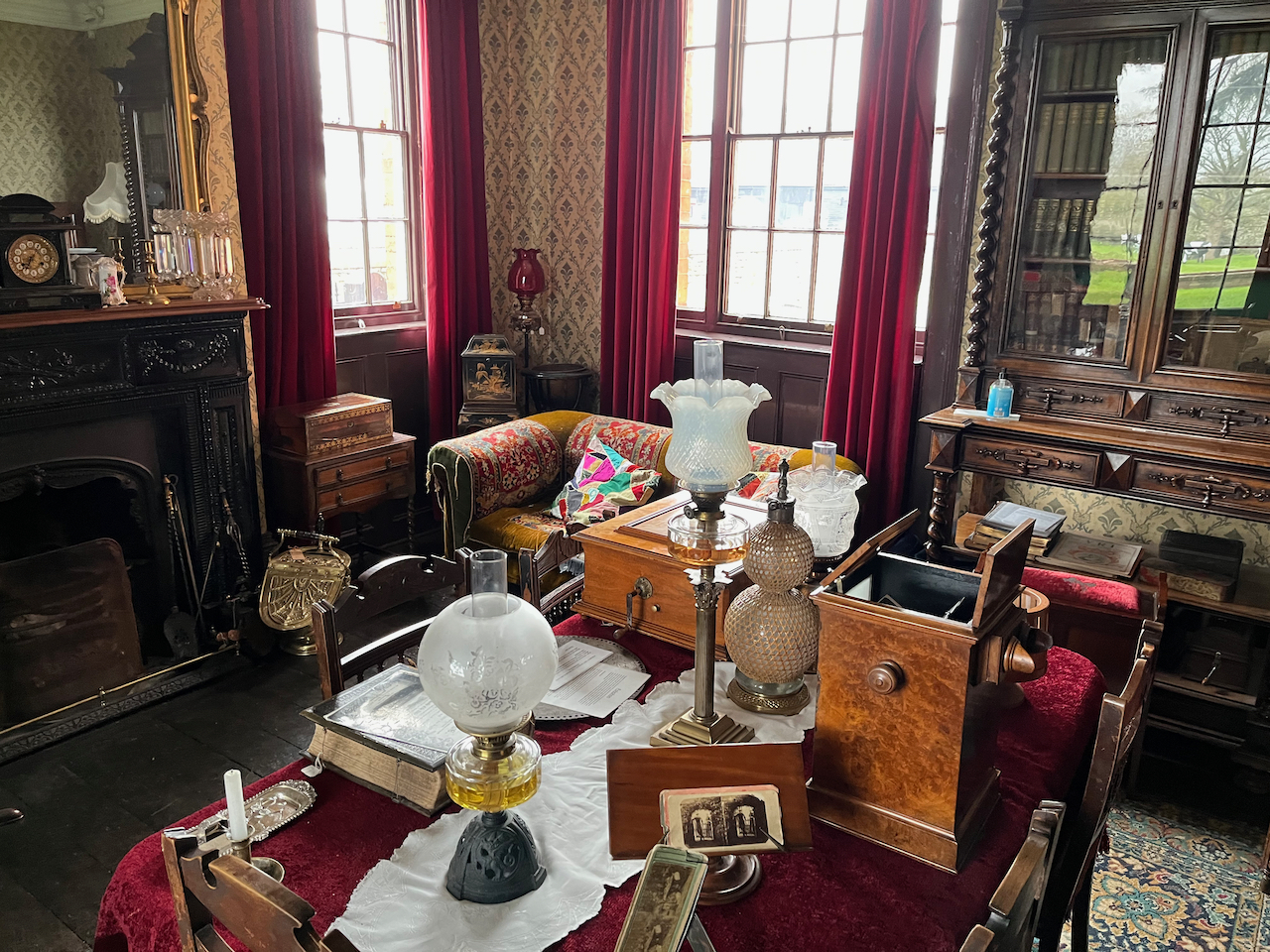
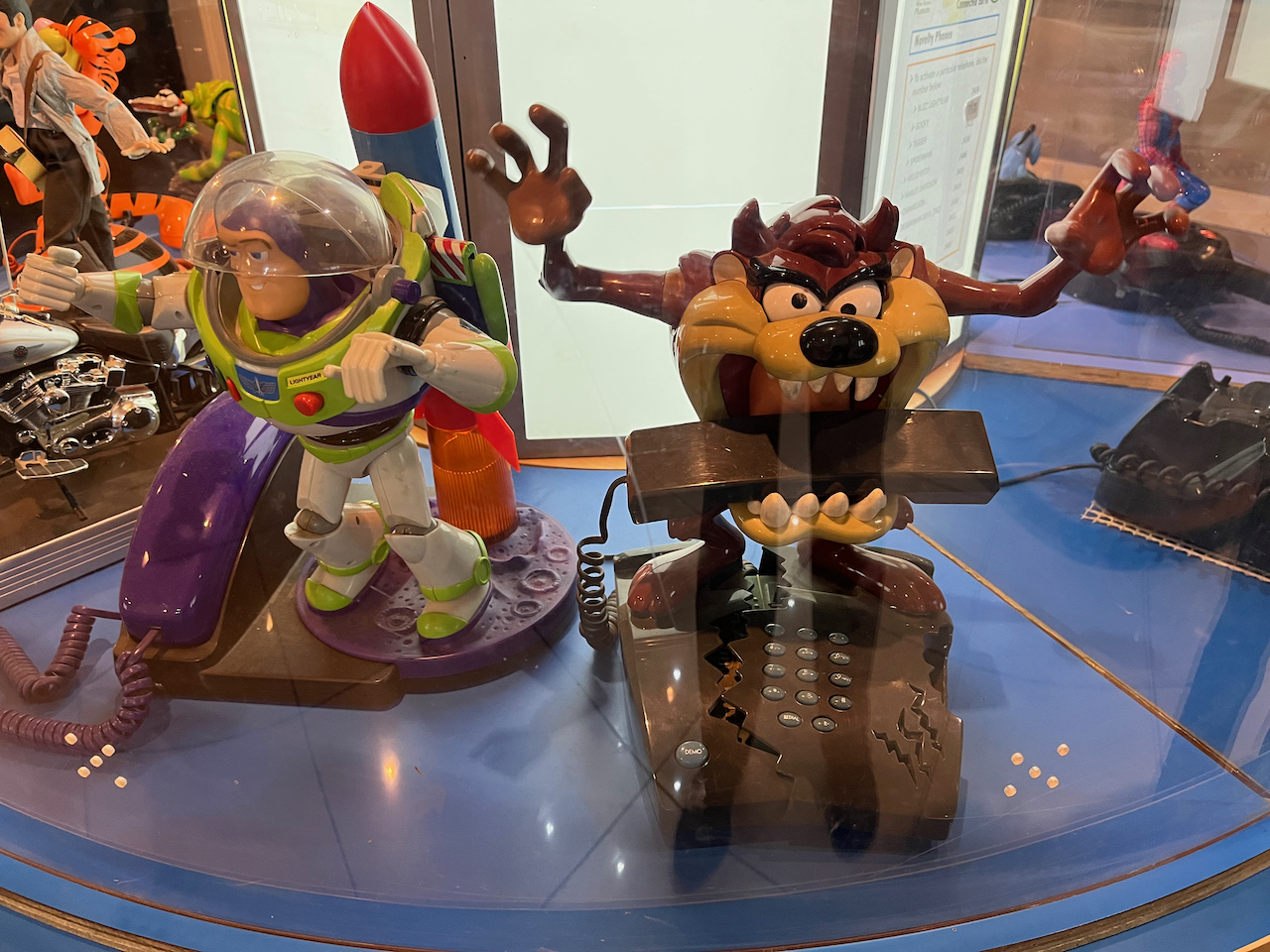
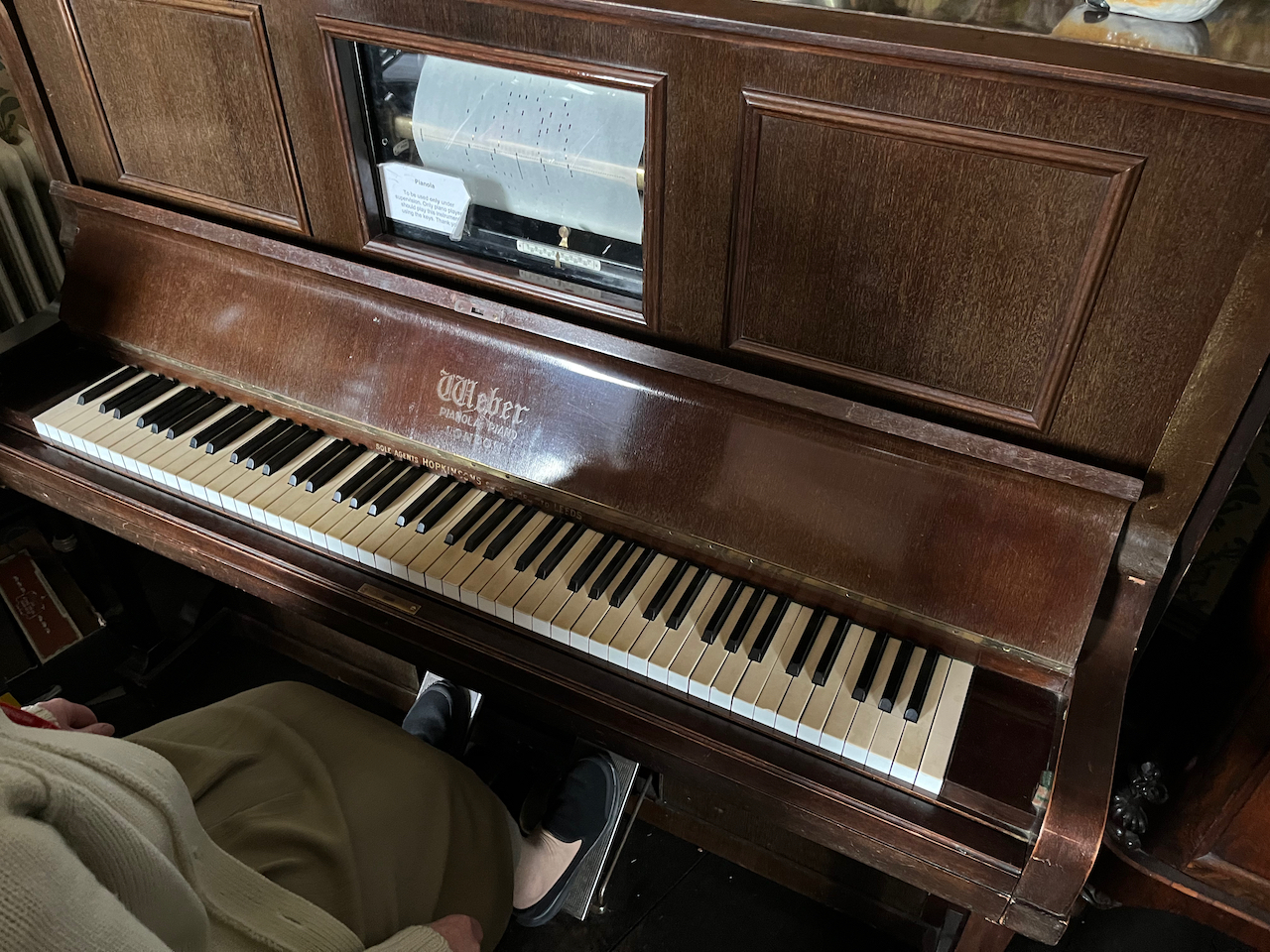

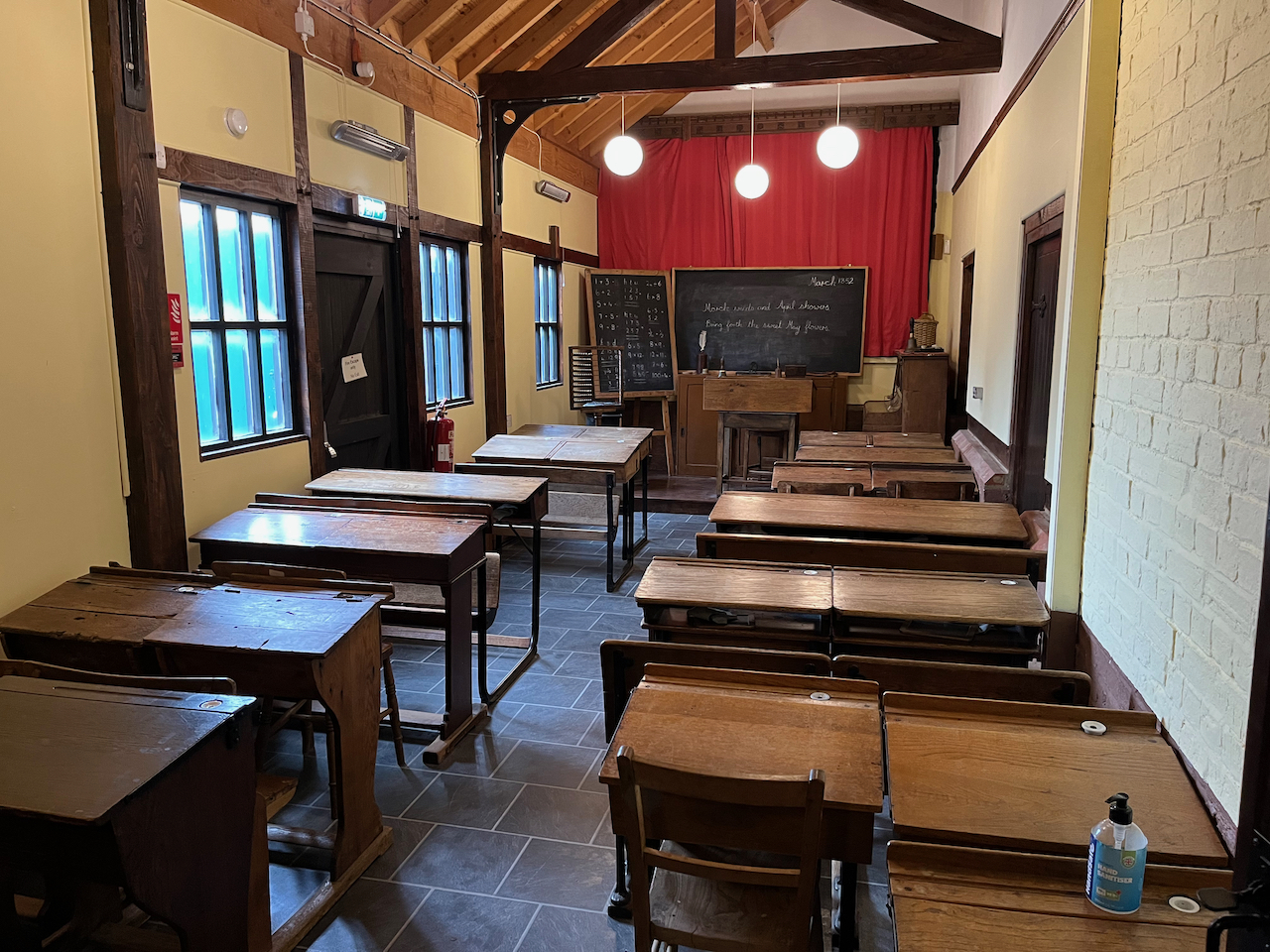
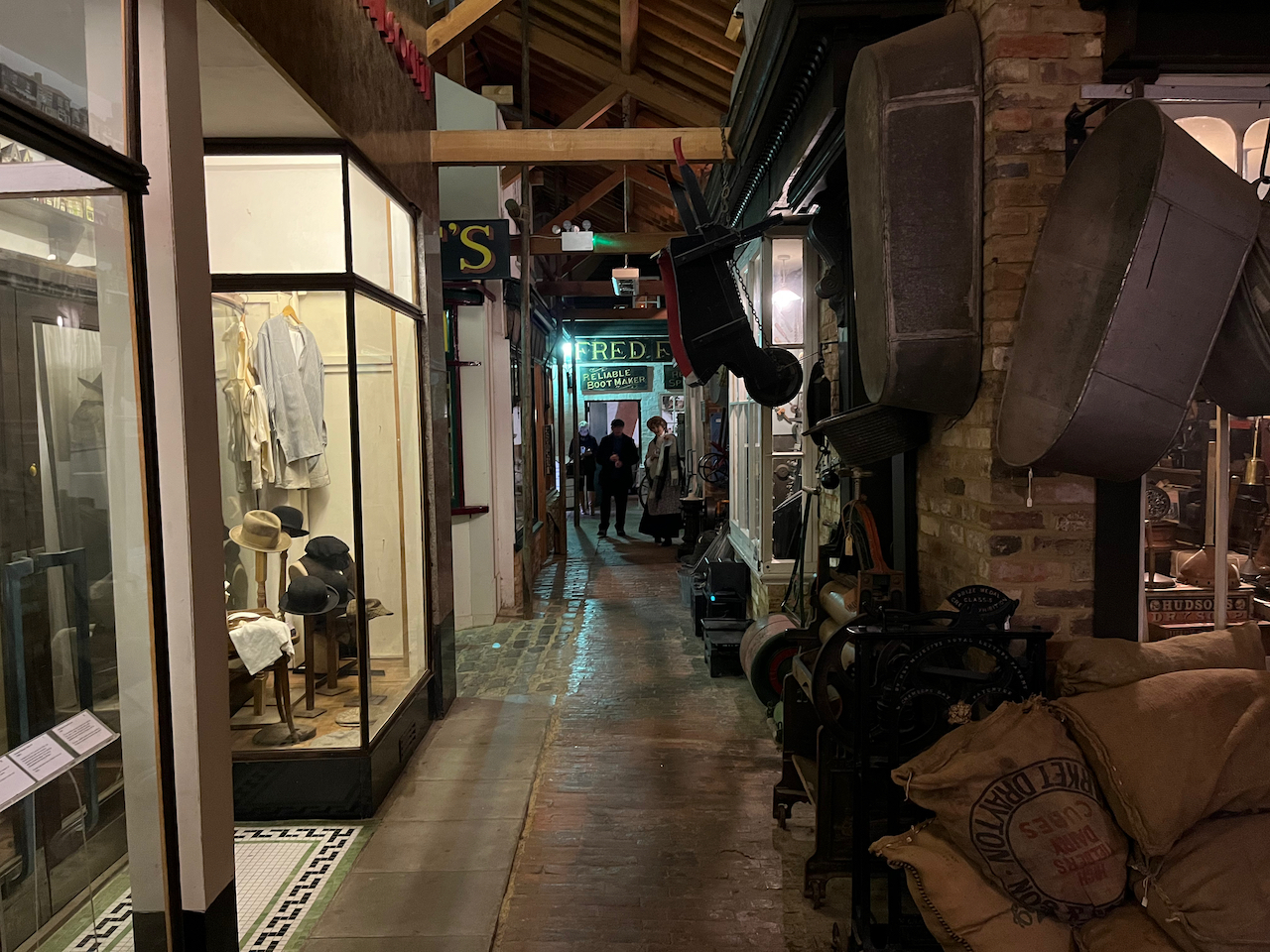

4 thoughts on “My MK Getaway – Codebreakers, Computers & Collectors”